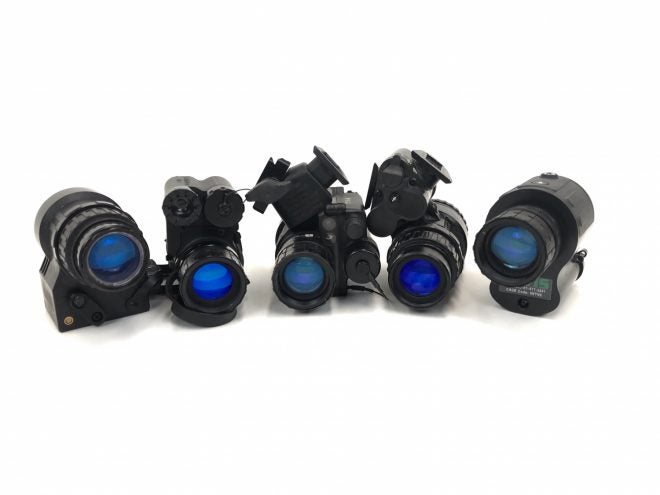For this week’s edition of Friday Night Lights, we will take a look at some PVS-14 alternatives. The venerable PVS-14 is like the Glock of the night vision world. It is robust and there are way more out there than you think. However, some people want the Taurus or Smith & Wesson of the night vision world. Not everyone can afford them and some just don’t like Glocks or in this case the PVS-14. In this article, we will be comparing the housings of these PVS-14 Alternatives to the PVS-14. Night vision devices can be thought of like a precision bolt gun. The image intensifier tube is the barreled action. The glass on night vision is your optic on said bolt gun. The housing is the chassis.
Monocular Night Vision
For the most part, you can do everything you want with a good monocular like the PVS-14. Shooting, driving, and walking in low light areas can all be accomplished with a good monocular. Some prefer a monocular over dual tube binocular night vision. The advantages over dual-tube NODs are less weight, increased situational awareness and lower cost. A monocular typically weighs less than a set of dual tube binos. Obviously, they are cheaper than binos unless you splurge on a PSQ-20 (thermal fusion night vision monocular) which costs something like $14k.
Monocular night vision devices are pretty straight forward. You have an objective lens, monocular housing, battery housing and a rear eyepiece. They typically have an onboard IR illuminator for helping to illuminate extremely low lit areas where there is little to no ambient light.
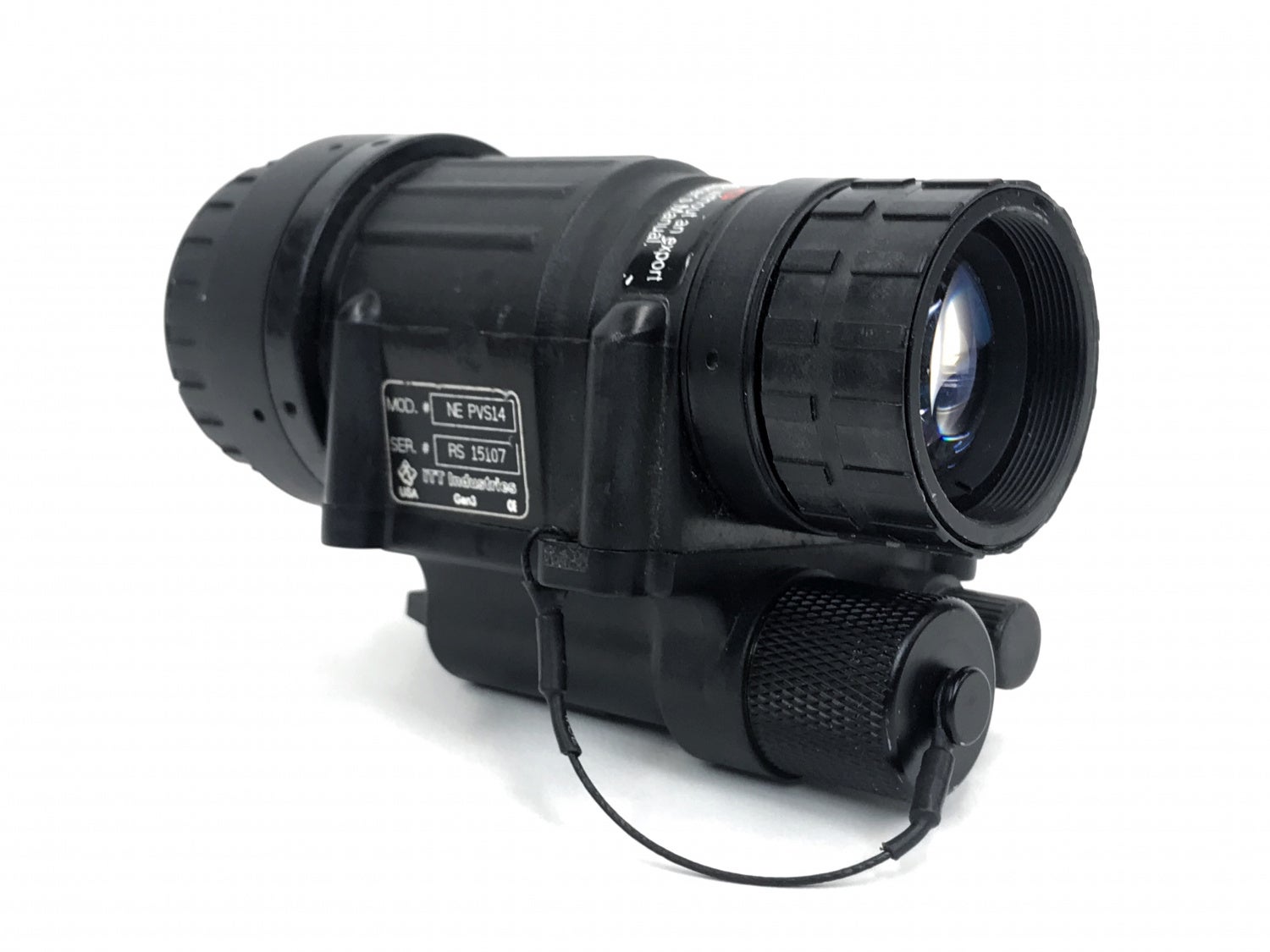
PVS-14
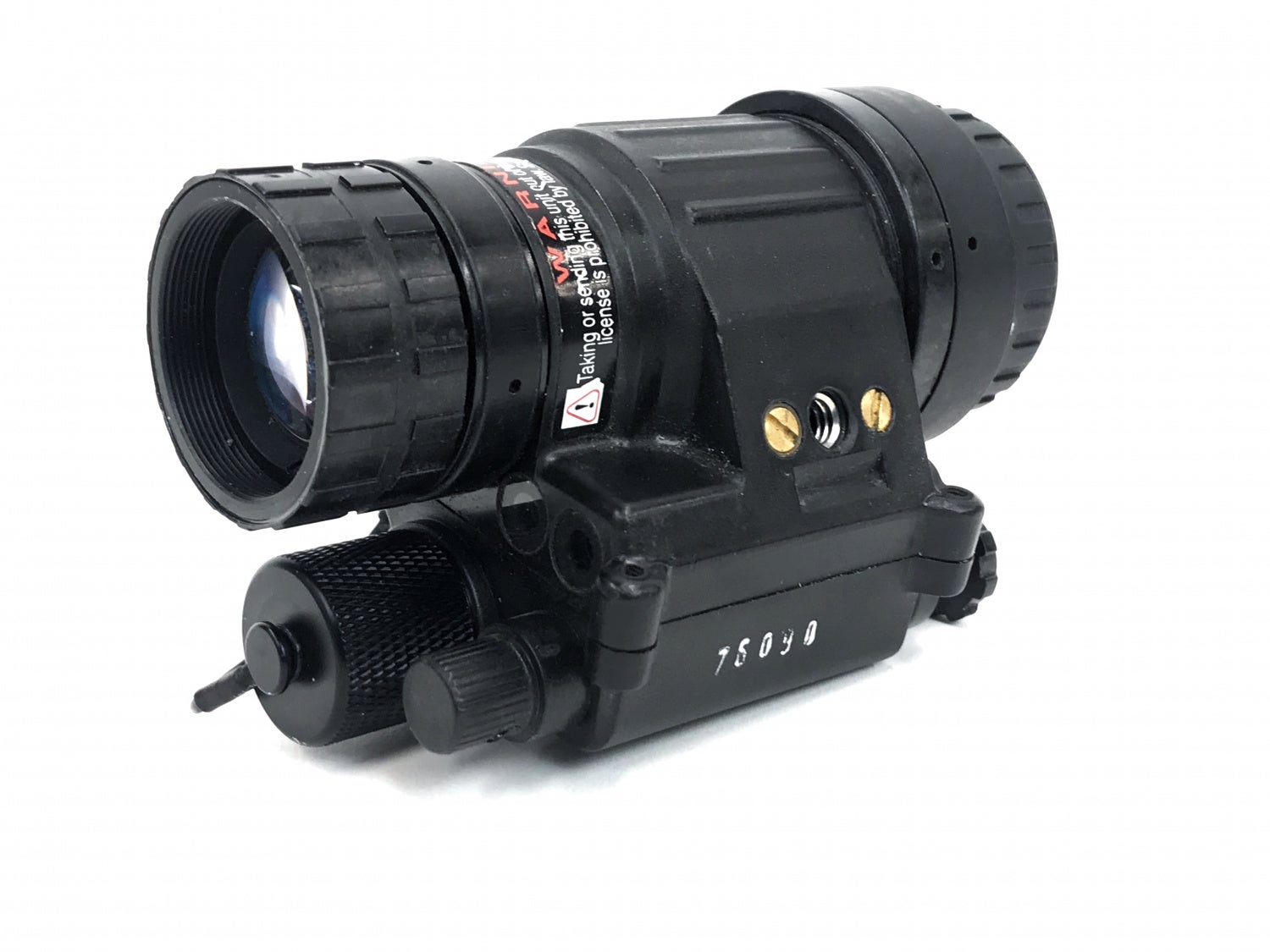

The power switch is on the rear of the PVS-14. Pull and turn after the on position will activate the IR illuminator.
Envis M703E
One of my favorites of the PVS-14 alternatives is the Envis M703E. These were made by various night vision companies. The sticker below the objective lens can say American Eagle III, NVIS, and in this case Envis. I am sure there are other variants out there but the housings are all the same for the most part.
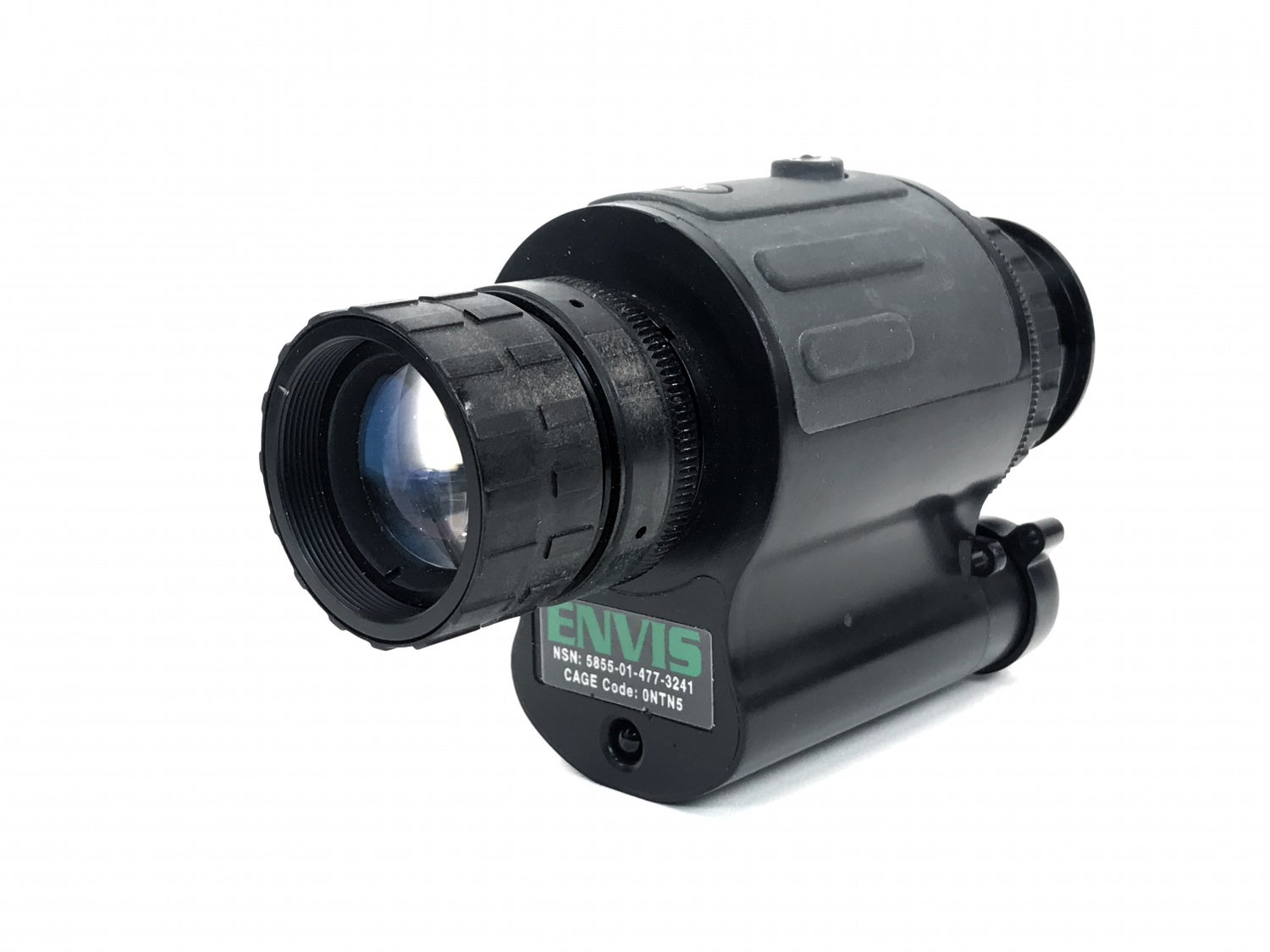
The Envis was developed for downed pilots. Escape and evade night vision is allegedly how it got its name. The Envis is a bit different from the PVS-14. AS you can see in the photo below the Envis has two buttons. One is for power and the other is for the onboard IR Illuminator. Unlike the PVS-14, the Envis IR illuminator does not stay on after you press the button. It is a dead man switch. Because of this, there is no red LED indicator in the eyepiece field of view like the PVS-14.
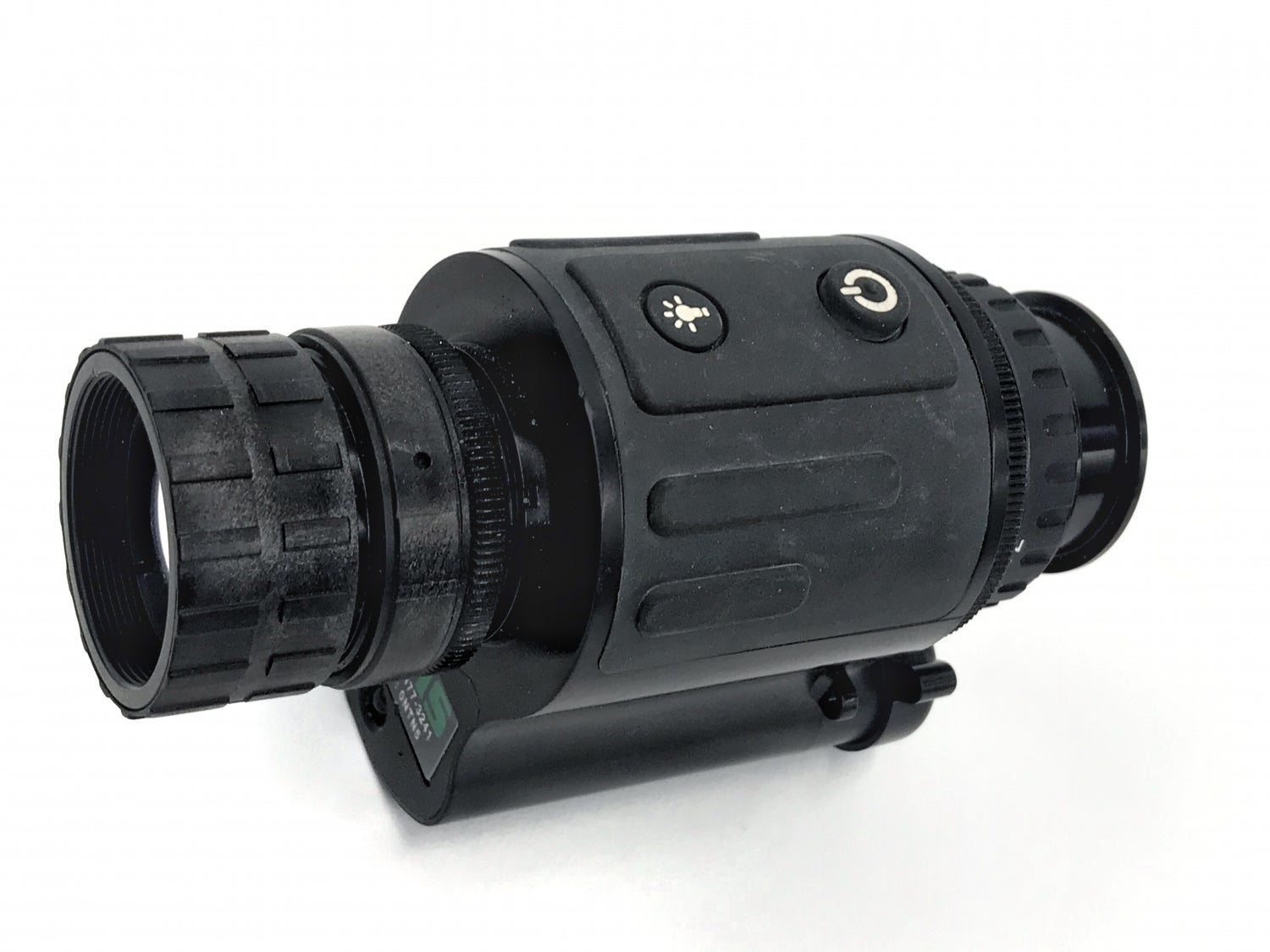
The Envis is powered by dual AA batteries.
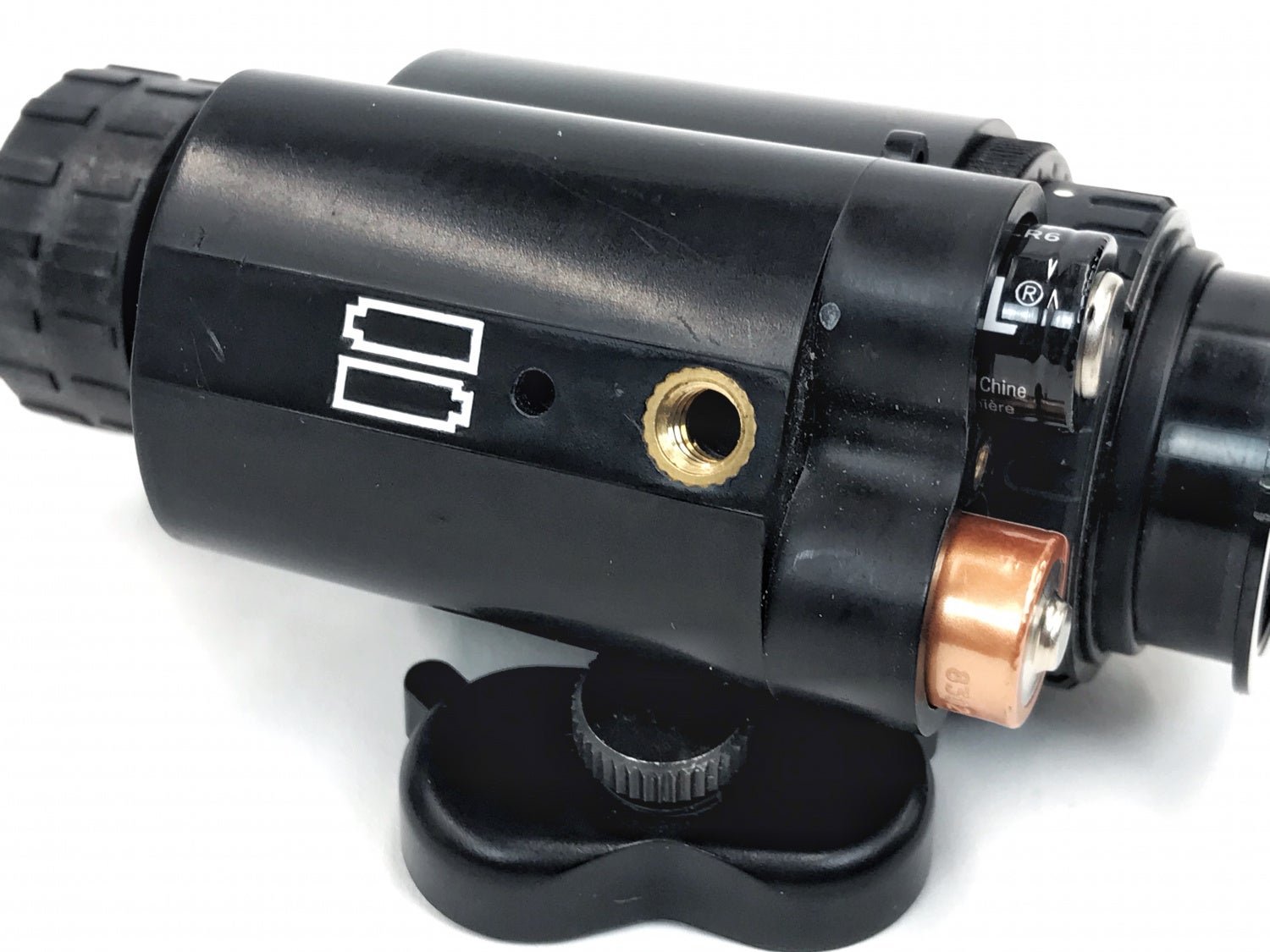
The battery compartment is the weakness of the Envis. Since it is molded as a one-piece with the monocular housing, it cannot be replaced if broken. Often the battery compartment is broken where the battery compartment cap screws into the housing. I have used rubber bands and in one case fabricated a plastic battery cap holder that helps keep the battery cap in place by screwing it to the tripod hole.
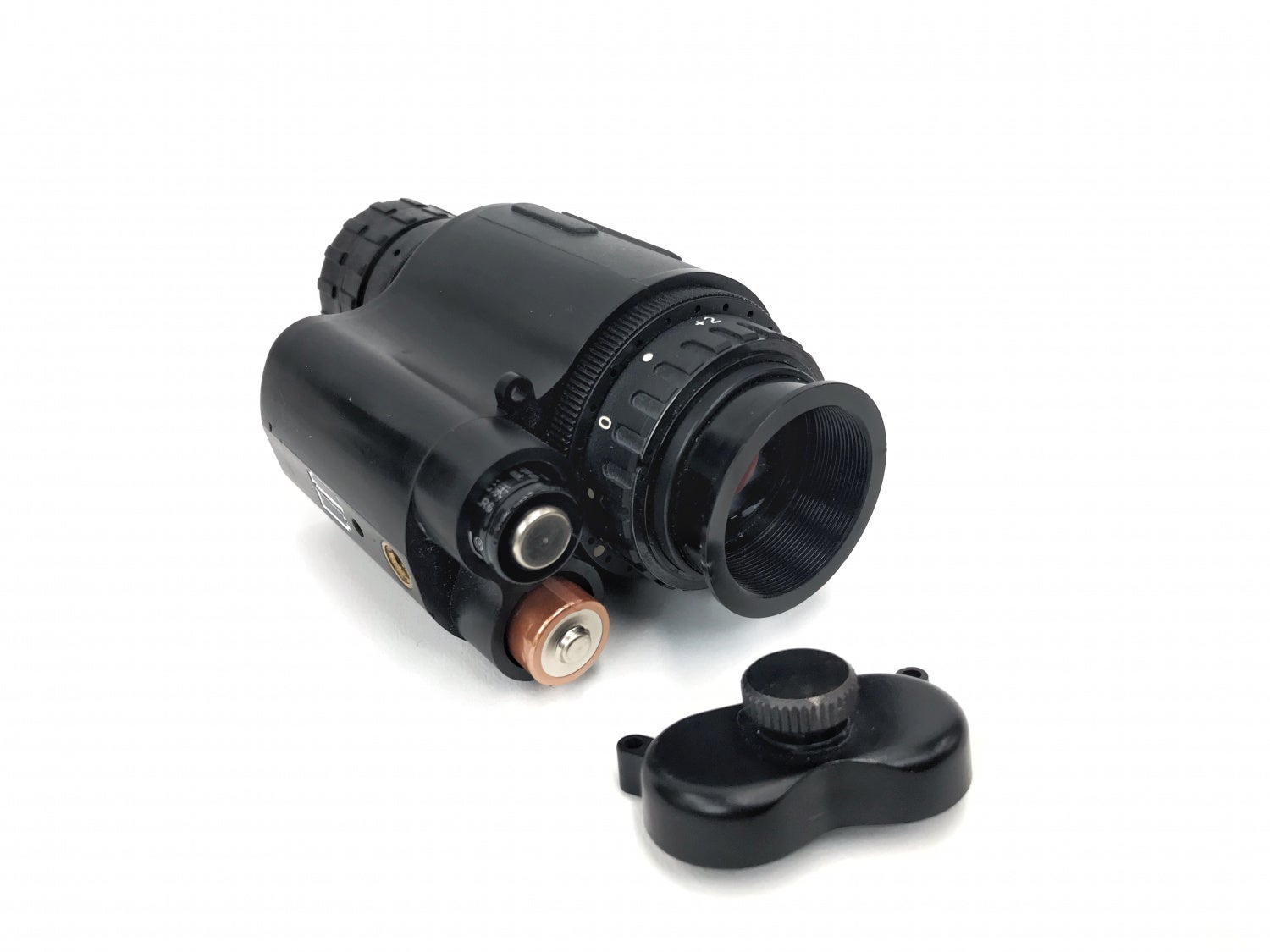
While it has an objective lens that resembles a PVS-14 and PVS-7 objective, it is not the same. The focus adjustment of these objective lenses has a finer thread pitch than a PVS-14. This objective lens is actually C-mount compatible. Some Envis units come with a Japanese CCTV Computar lens which are cheaper and easier to get than the PVS-14 looking objective lens.

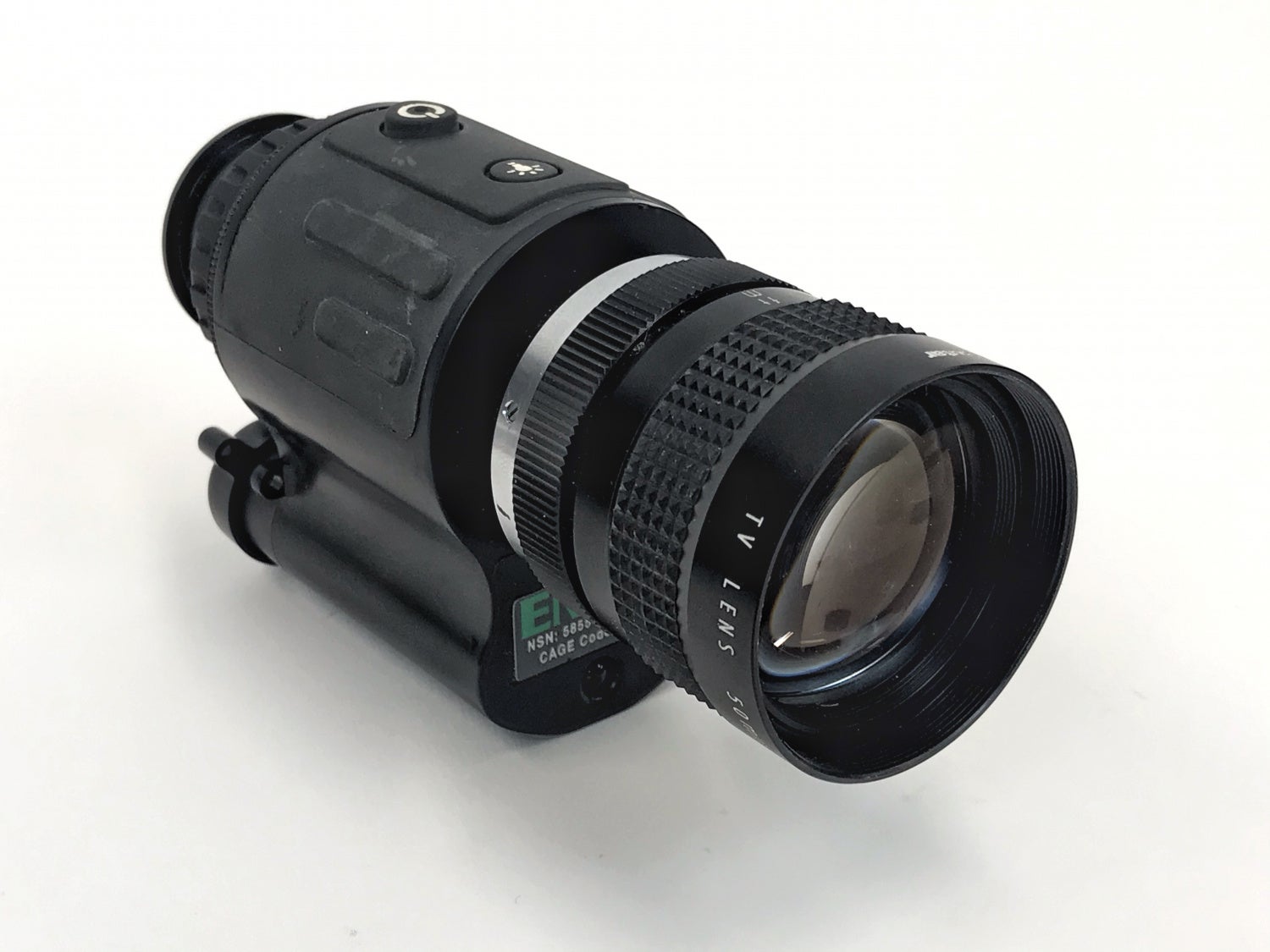
Since the Envis is threaded for C-mount lenses you can use them for astrophotography on telescopes. Or you can get adapters for film camera lenses to attach to the Envis body like the photo above. One of the downsides to the Envis is that it was never designed to be mounted to a helmet. It was designed as a handheld unit. However, there are ways to mount one if you really want to. Someone has taken it upon them to make an adapter that will allow you to use J-Arms for PVS-14s.
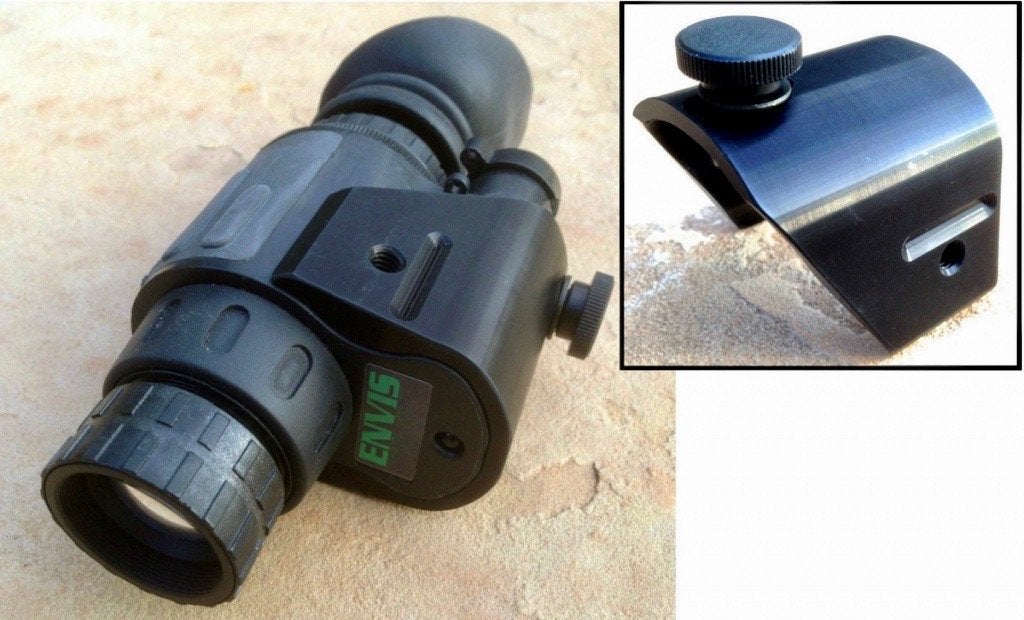
Photo from Amazon listing
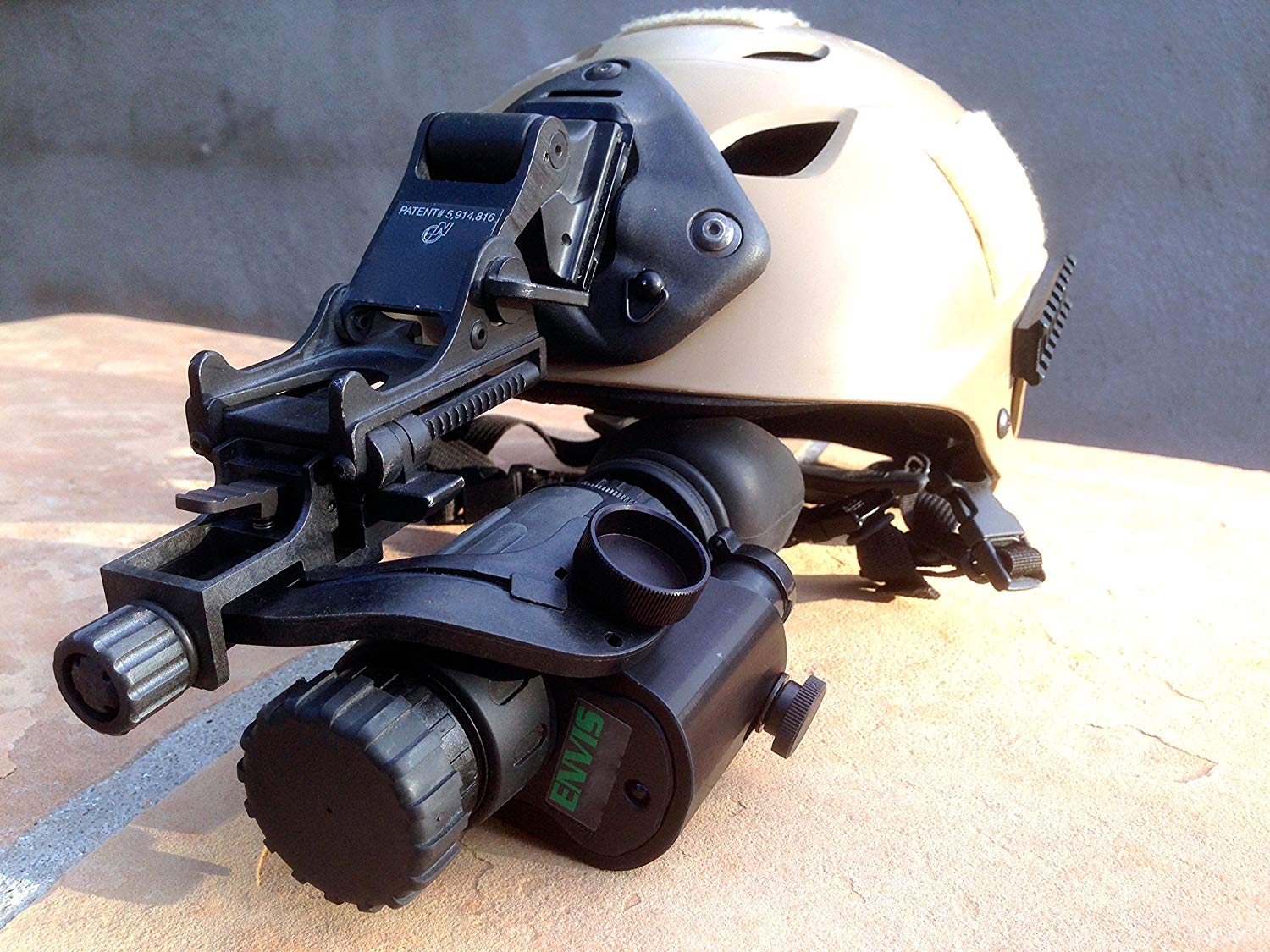
Photo from Amazon listing
I bought a dual PVS-14 adapter from N-Vision that attaches to the objective lens infinity stop ring so I could bridge two Envis monoculars. Binos on a budget. Unfortunately, the bridge costs as much as an Envis housing.
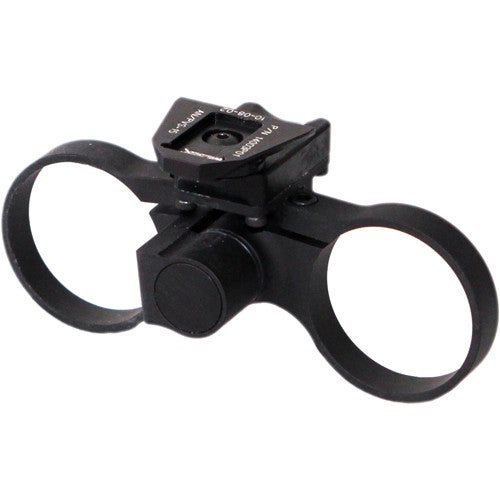
Photo by N-Vision
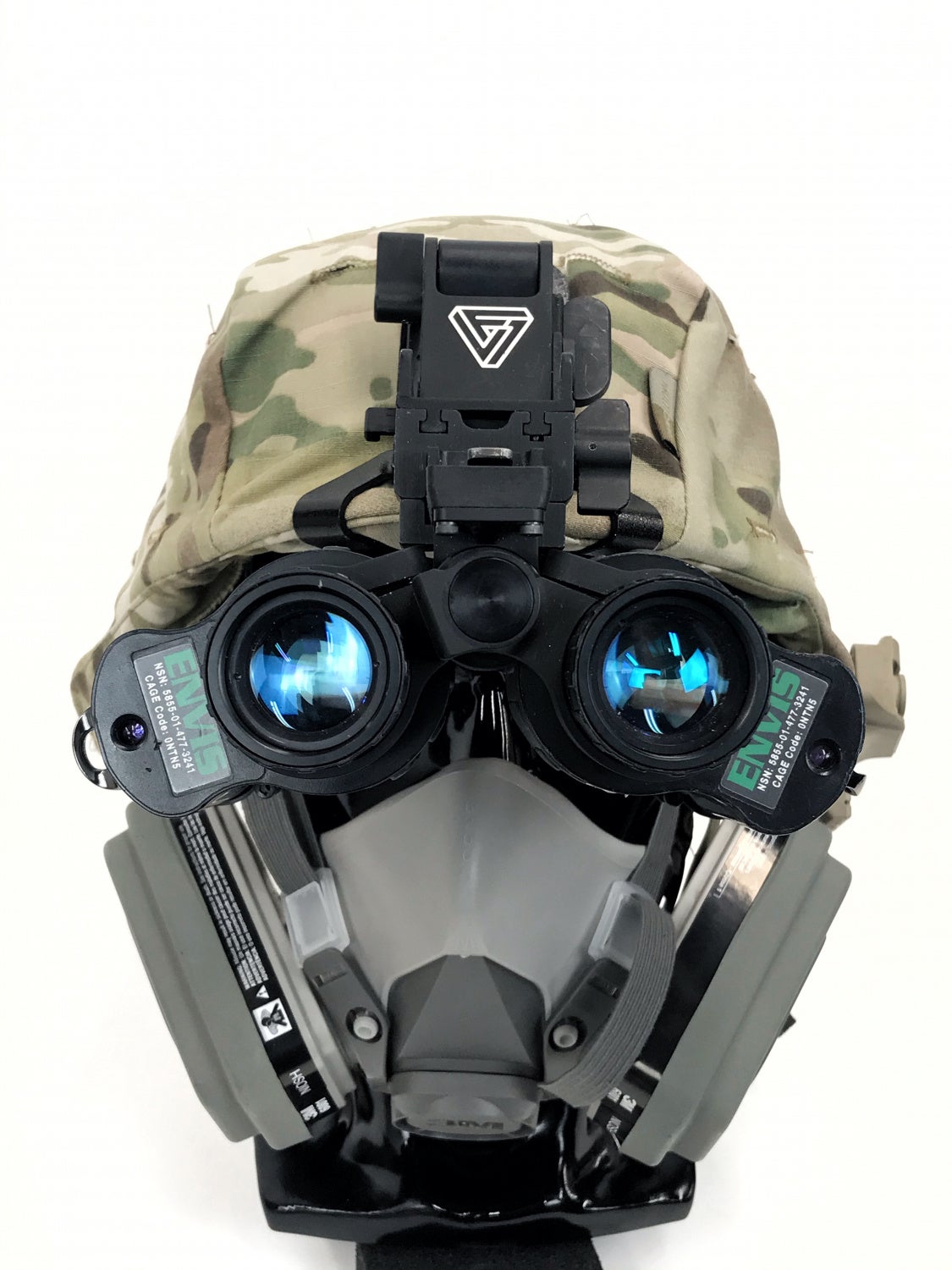
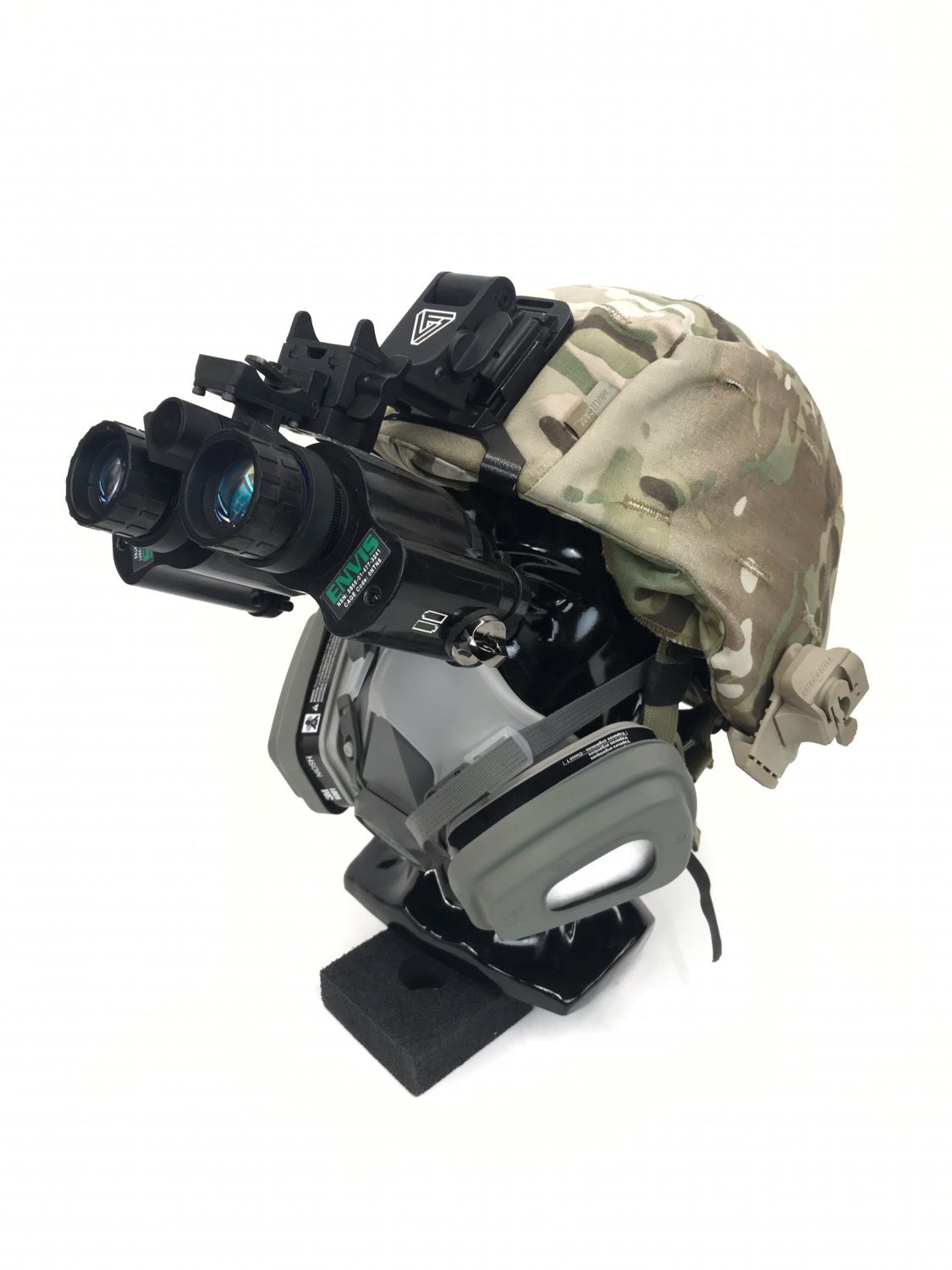
If you can find them, a complete Envis housing can be purchased for under $400. They are not that common and people usually snatch them up since they are inexpensive. But you can typically find someone who has one and then gets tired of it so they upgrade the housing to a PVS-14 or go dual tubes. That is how I got mine.
It can take a 10160 image intensifier tube just like any current night vision housing. It cannot take a 11769 tube so it does not have manual gain. PVS-14s can use either tube. The 11769 tube has a small pigtail that is plugged into the battery housing of the PVS-14 which allows for manual gain adjustments. The 10160 tubes do not have the pigtail and are often used in binocular housings. See my article about building a PVS-14 for more details.
Best PVS-14 Alternatives: AB Night Vision MOD-3
The PVS-14 is good but there are units that surpass it. The AB Night Vision MOD-3 is such a housing. It still uses PVS-14 optics unless you opt for the MOD-3C which can use C-mount lenses. Price-wise the MOD-3 housing is a little bit more than a PVS-14. A PVS-14 housing kit (everything minus the image intensifier tube) can be bought for around $700. The MOD-3 housing is $650 without the glass. Add an additional $400-450 for said glass and you are at $1000.
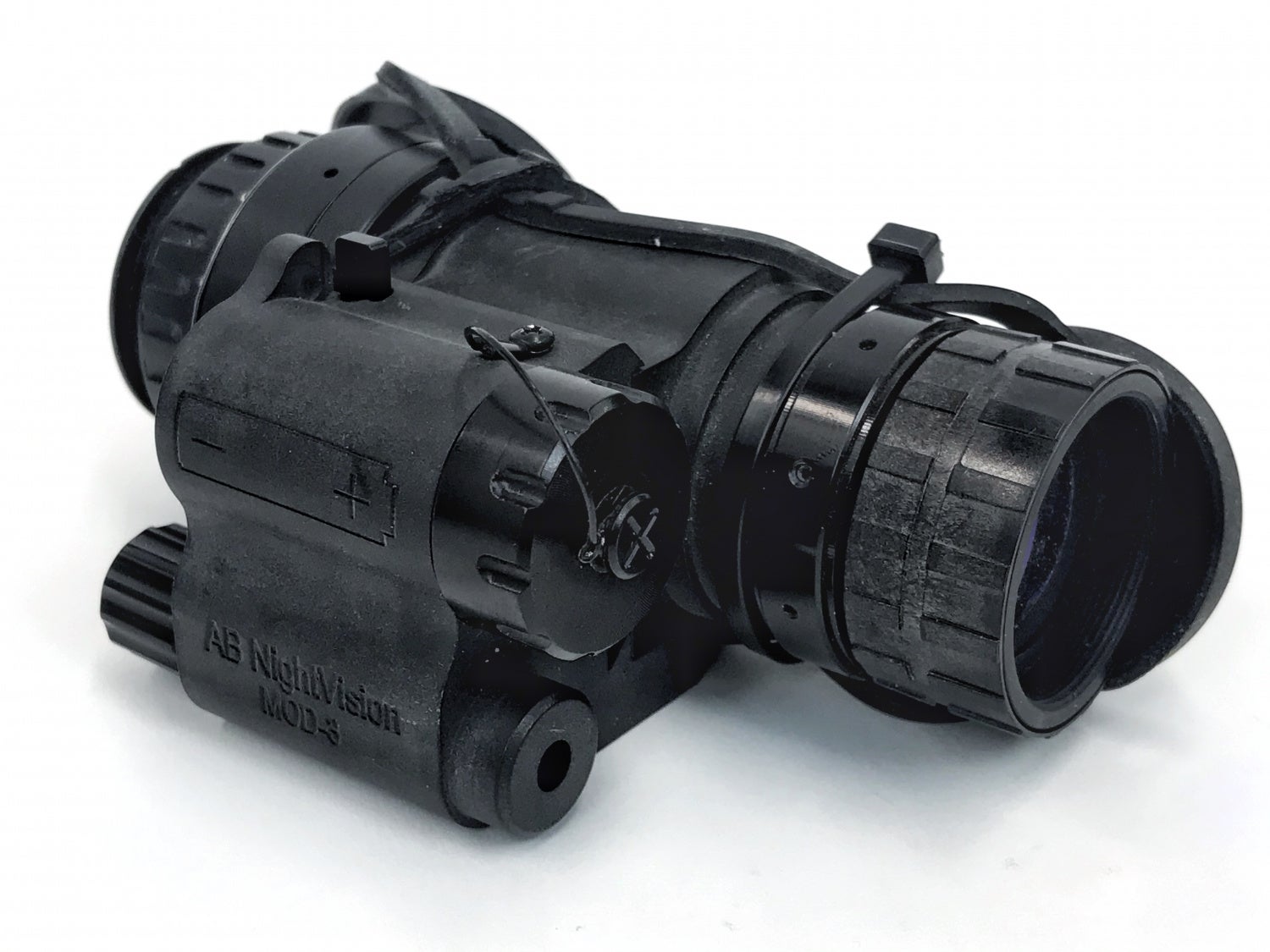
The MOD-3 housing functions like a PVS-14. The only real departure is that AB Night Vision built it to use a CR123 rather than AA batteries.
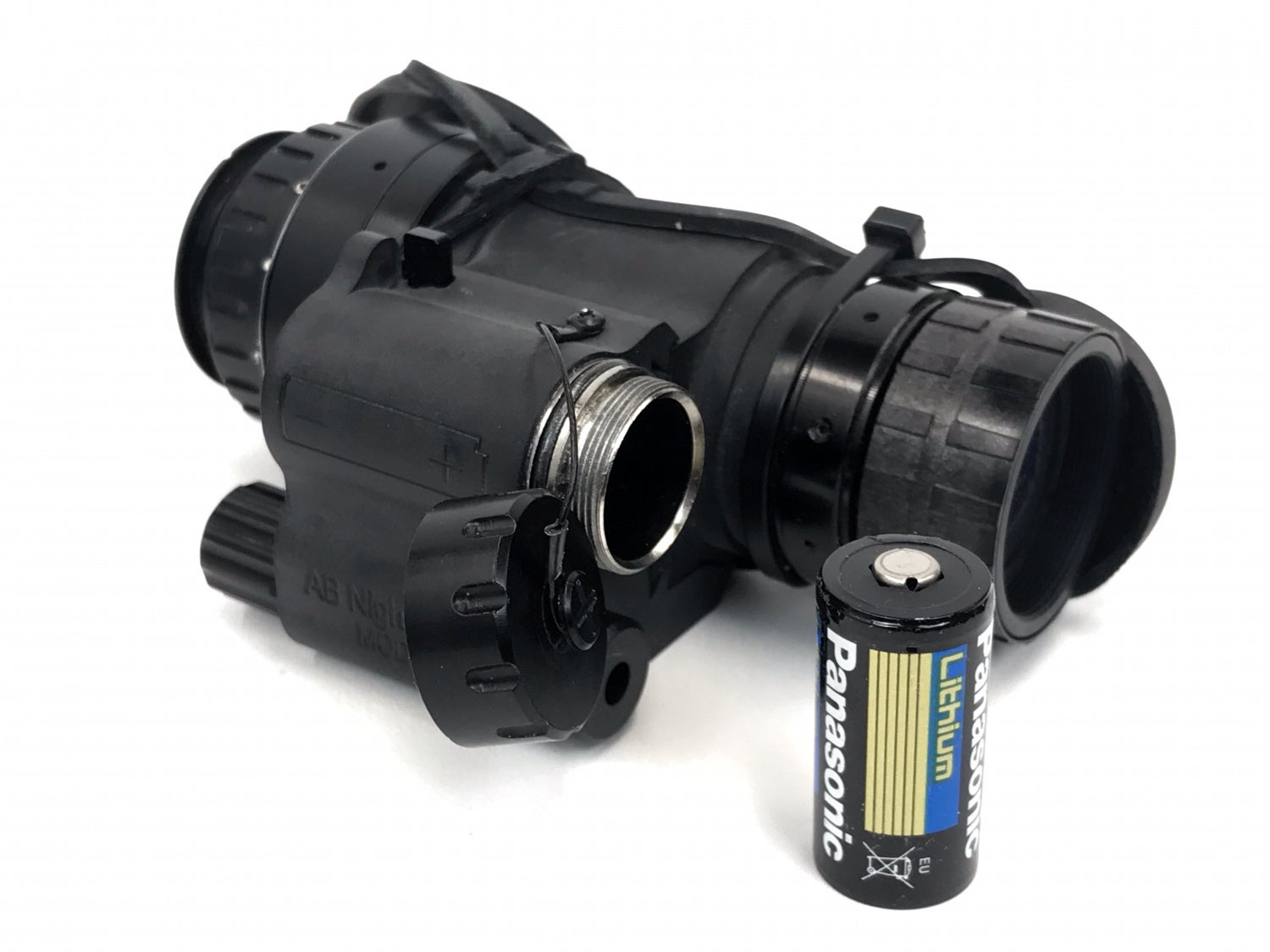
Oh and the fact that the MOD-3 is modular. The battery housing is quick detachable. For use as a monocular, this feature does not have any benefit. But if you buy a second one down the road you can get their powered bridge and build MOD-3 binos.
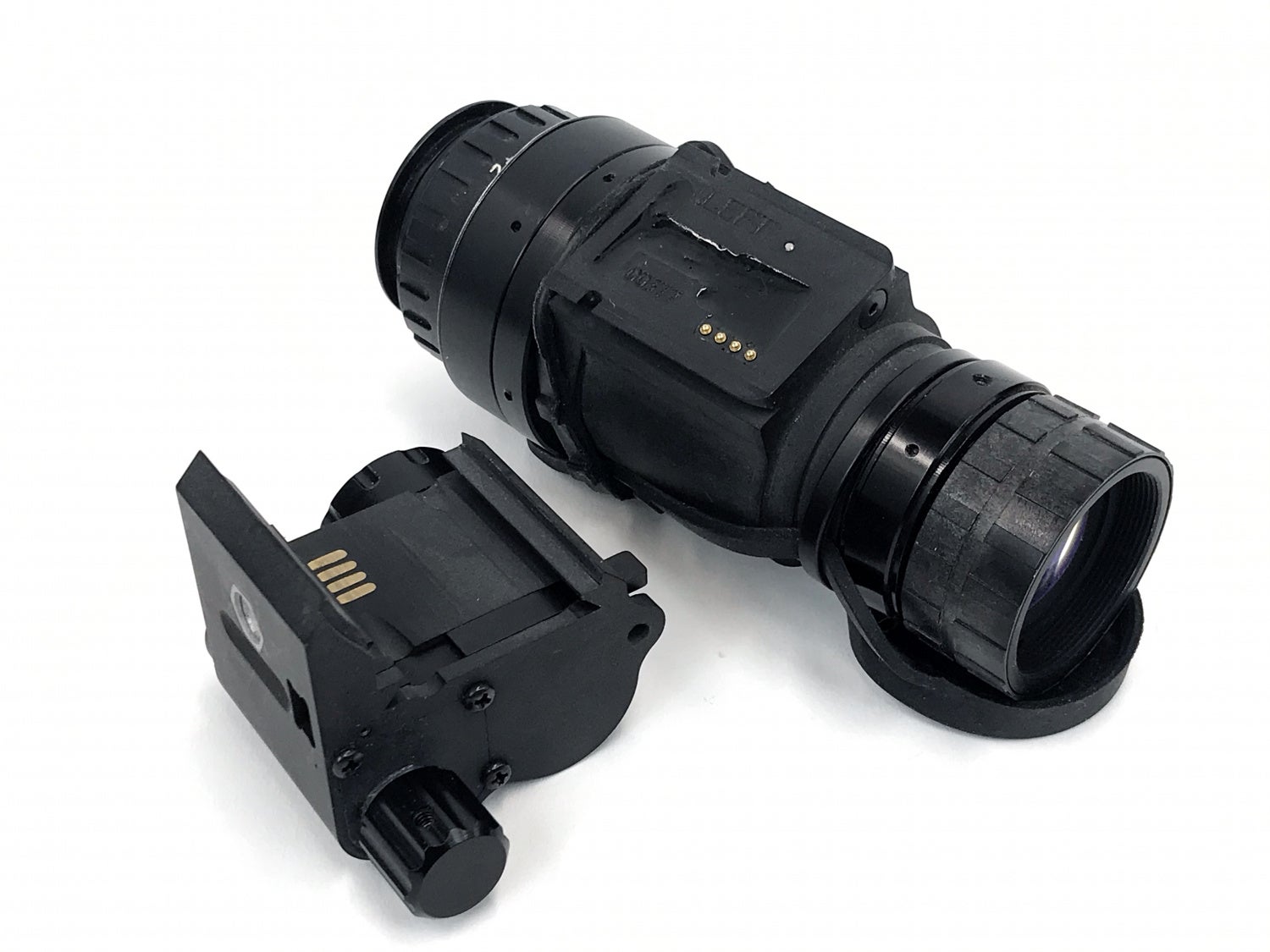
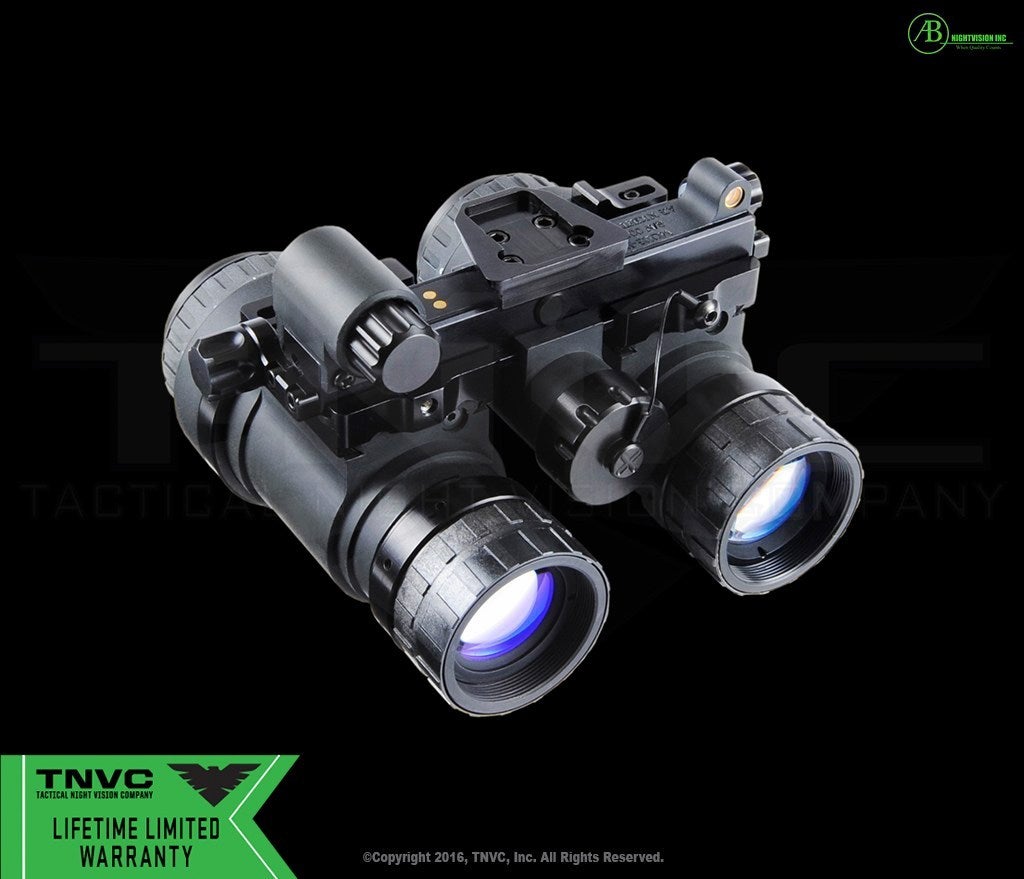
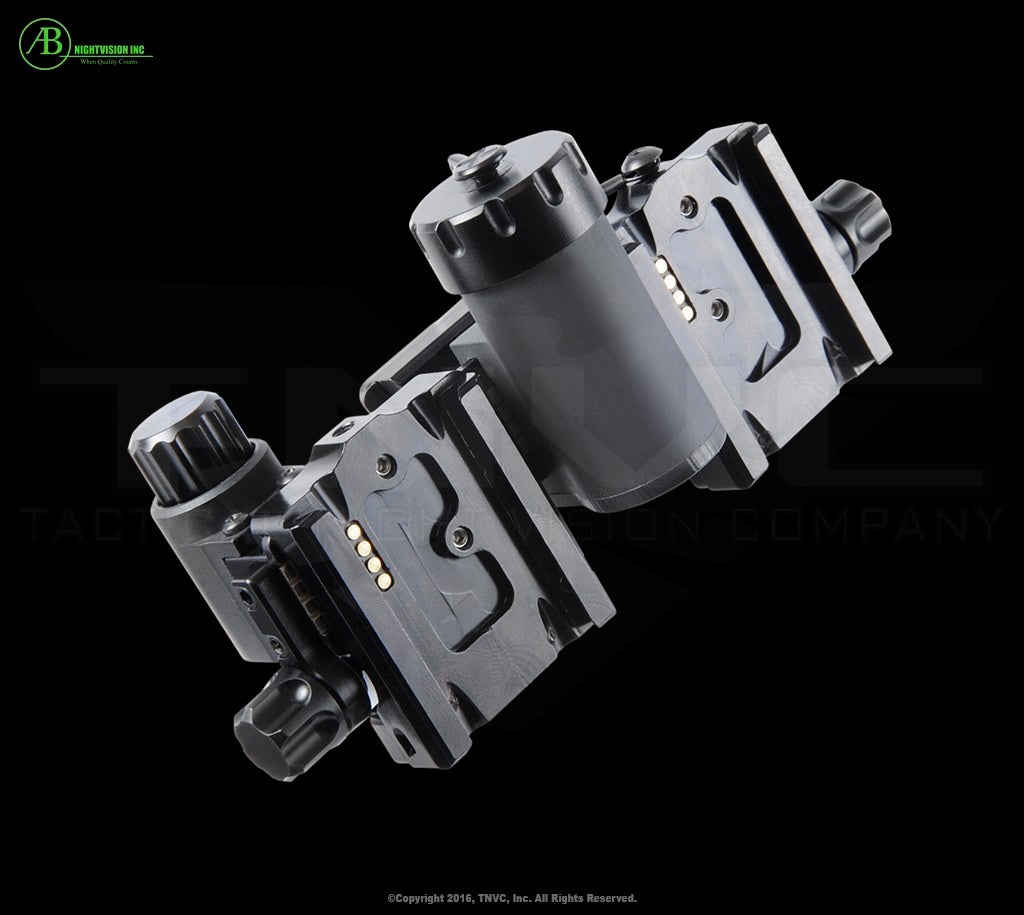
Here is the MOD-3 monocular next to a PVS-14.
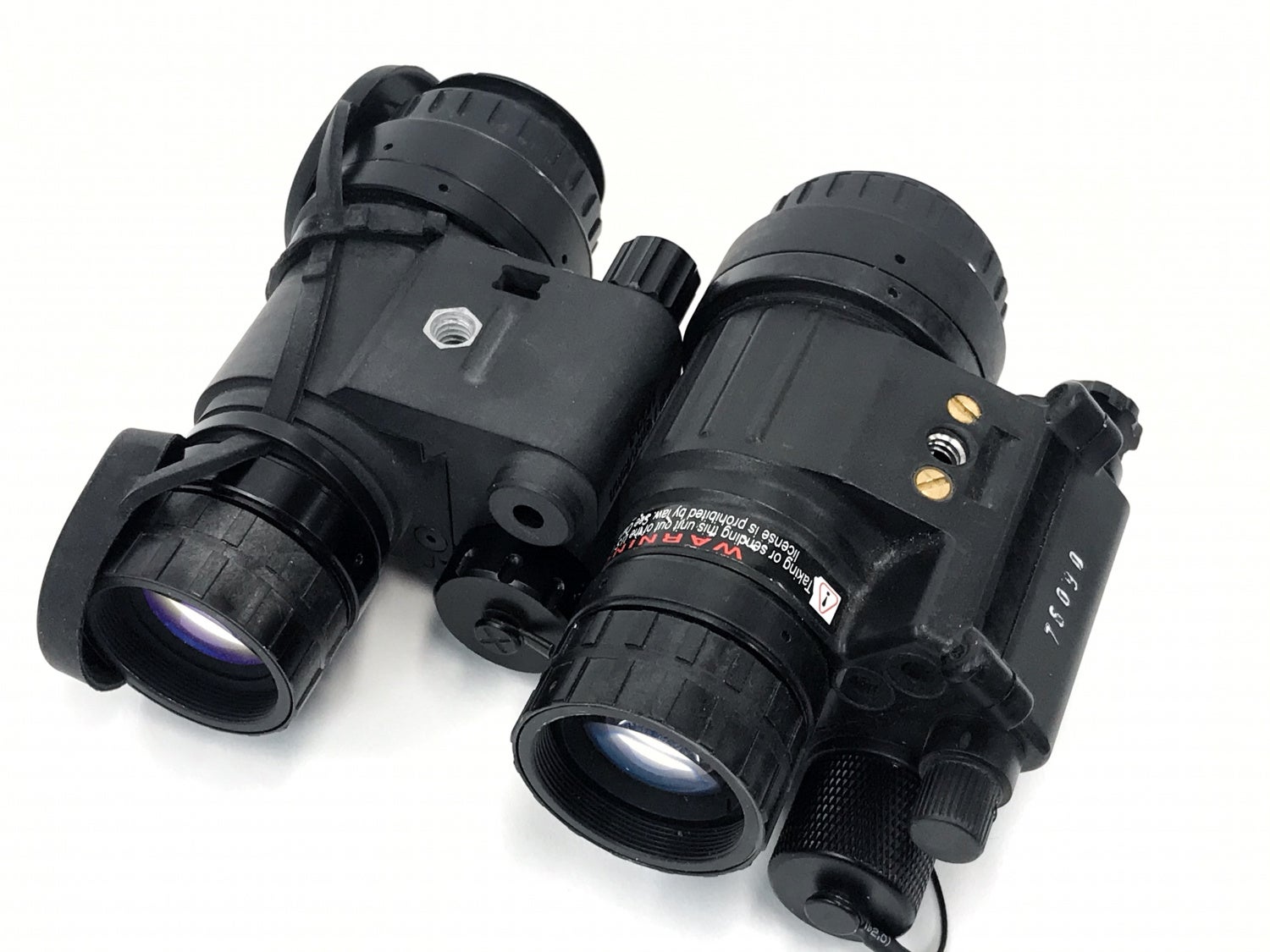
Just like a PVS-14, you can use any arm or dual dovetail adapter to attach it to a helmet mount.
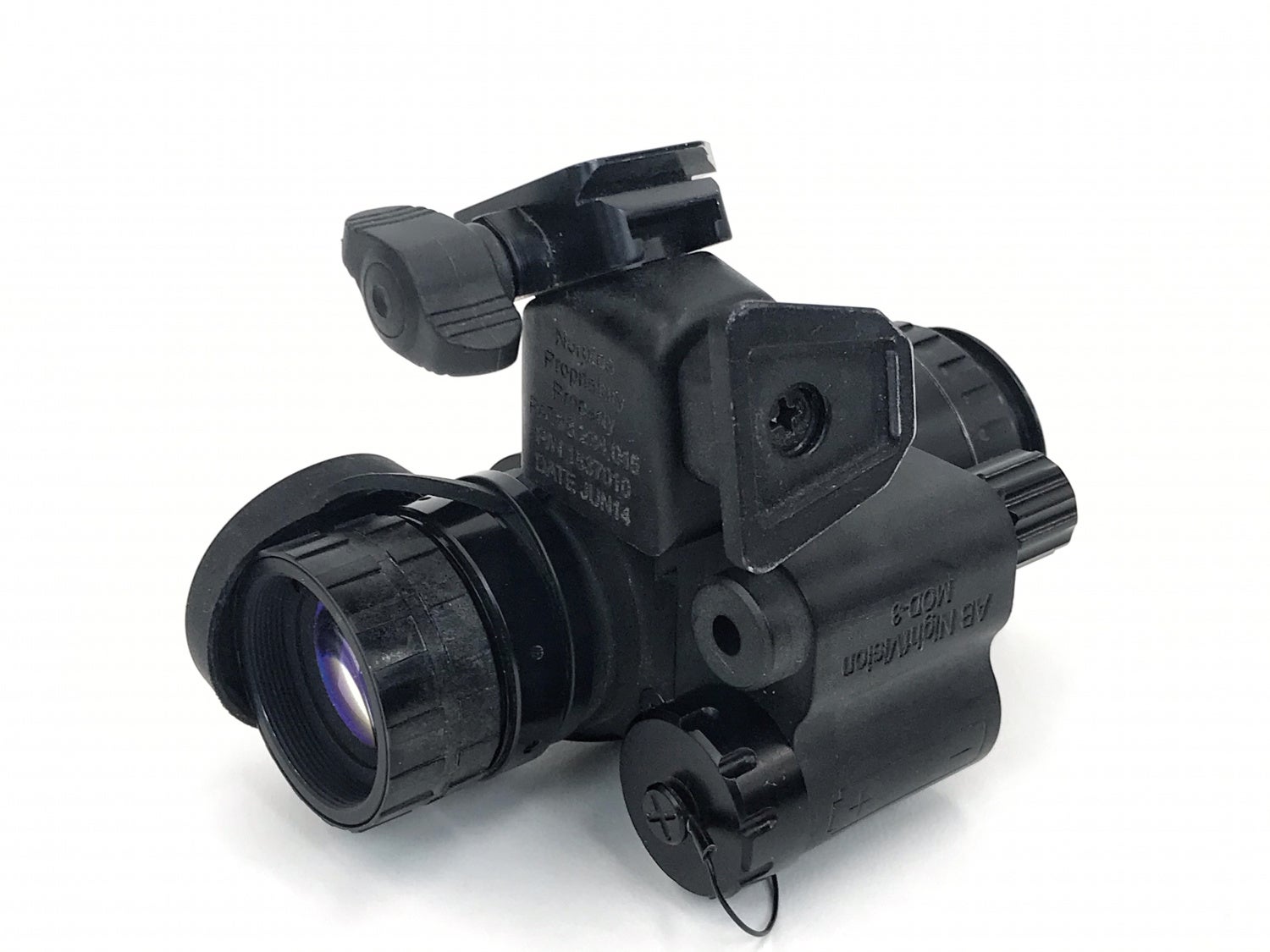
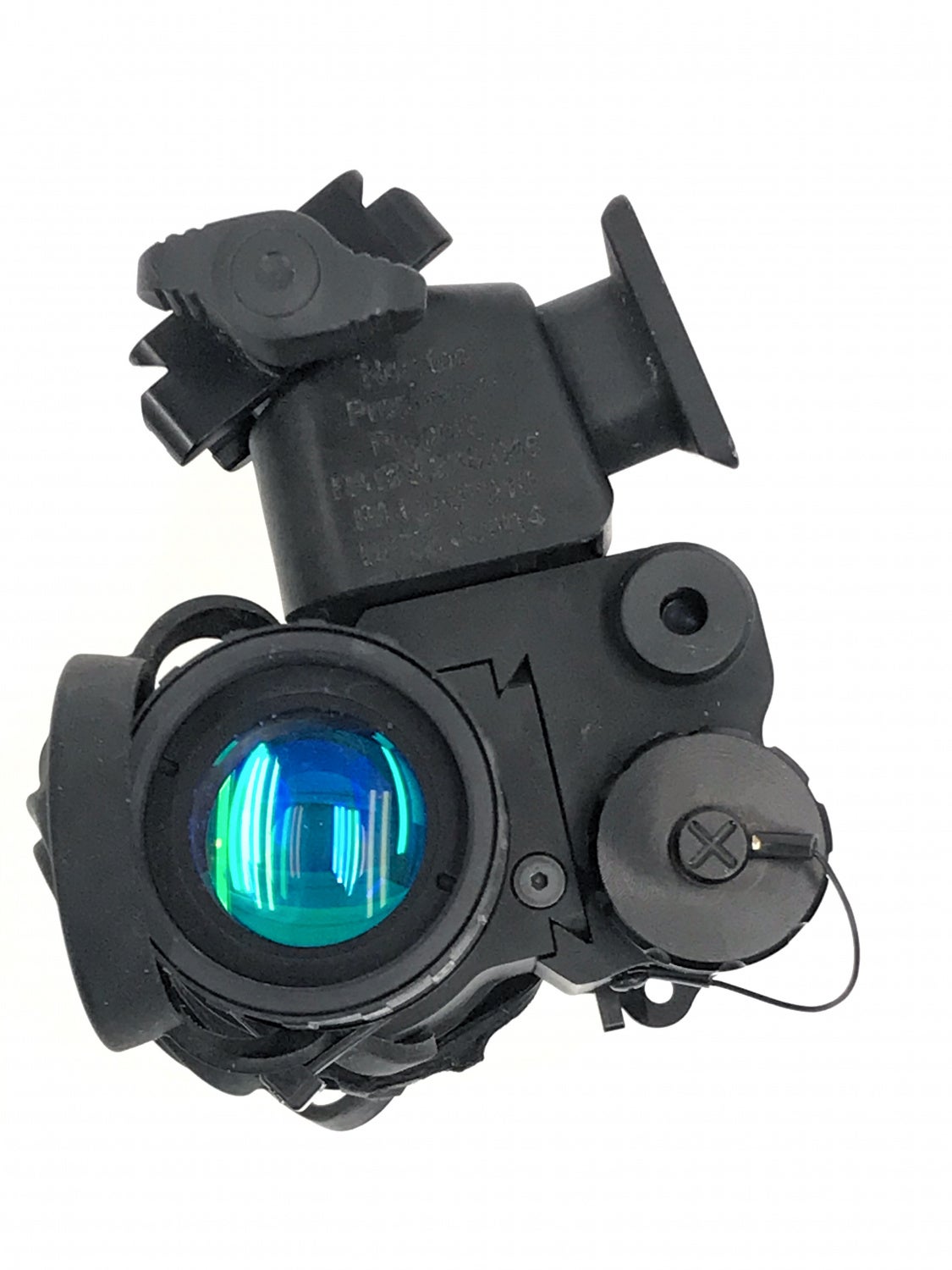
AN/PVS-18
Litton which is now part of L3 tried to replace the PVS-14 with the PVS-15 dual tube goggle. They also made a monocular version called the PVS-18. Imagine removing one of the monoculars from a PVS-15 and now you have a PVS-18, sort of.

DTNVG next to PVS-15
Here is the PVS-18. It is similar to the PVS-15 but lacks any articulation. Since it is a monocular the PVS-18 has dual dovetails built into the battery housing. This eliminates the negatives of running a J-Arm on a PVS-14. J-Arms start to get loose after some time. Even the Wilcox J-Arm starts to wobble if you use it a lot. The Dual dovetail of the PVS-18 eliminates this problem. To switch to your other eye, you just remove the PVS-18 and flip it over to use the other dovetail.
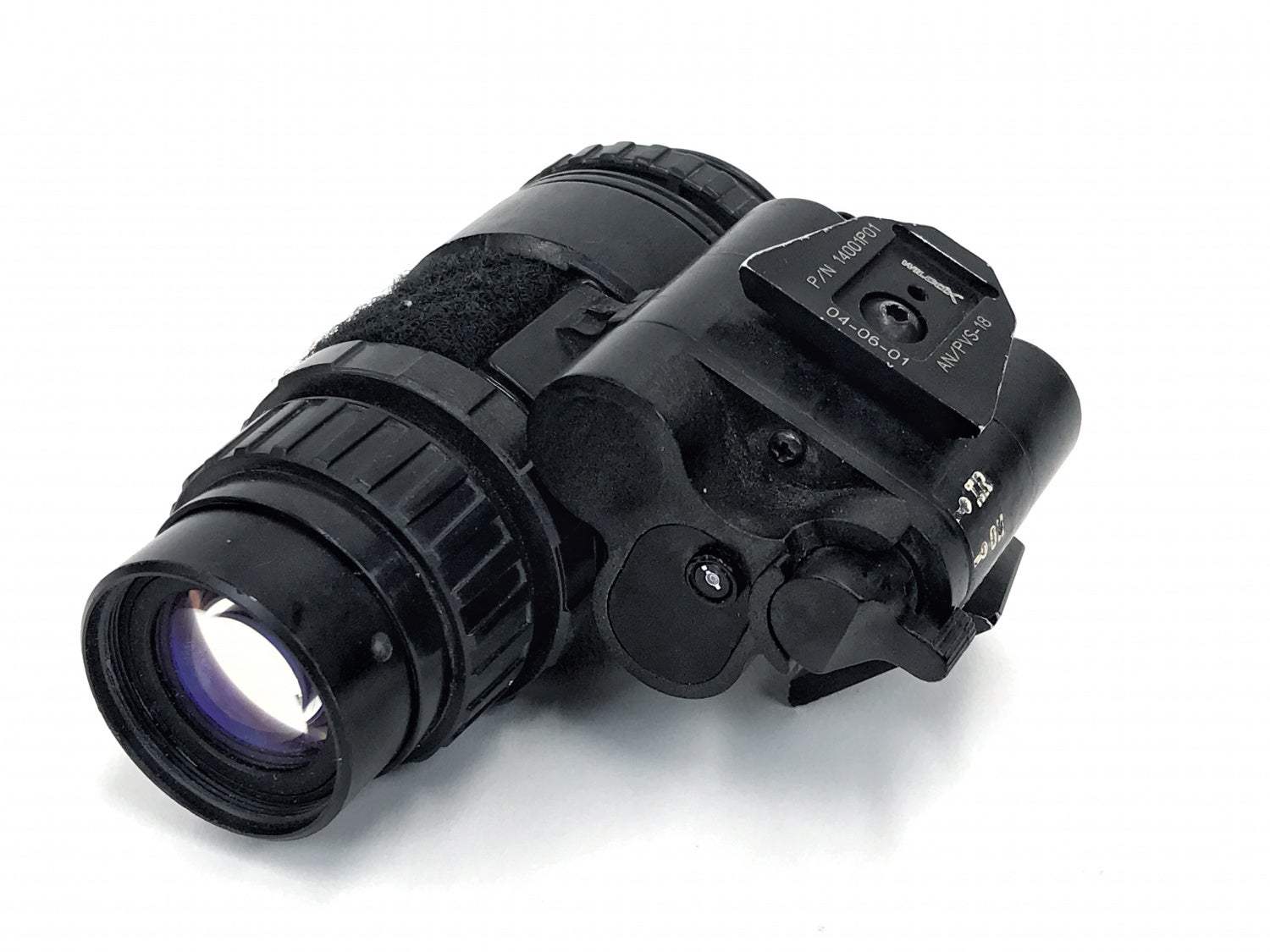
PVS-15 and thereby PVS-18 optics are allegedly better than PVS-14 optics however I have not noticed a difference. One downside to a PVS-18 is the proprietary optics. These are not as commonplace as the PVS-14 optics so trying to find replacements is difficult.
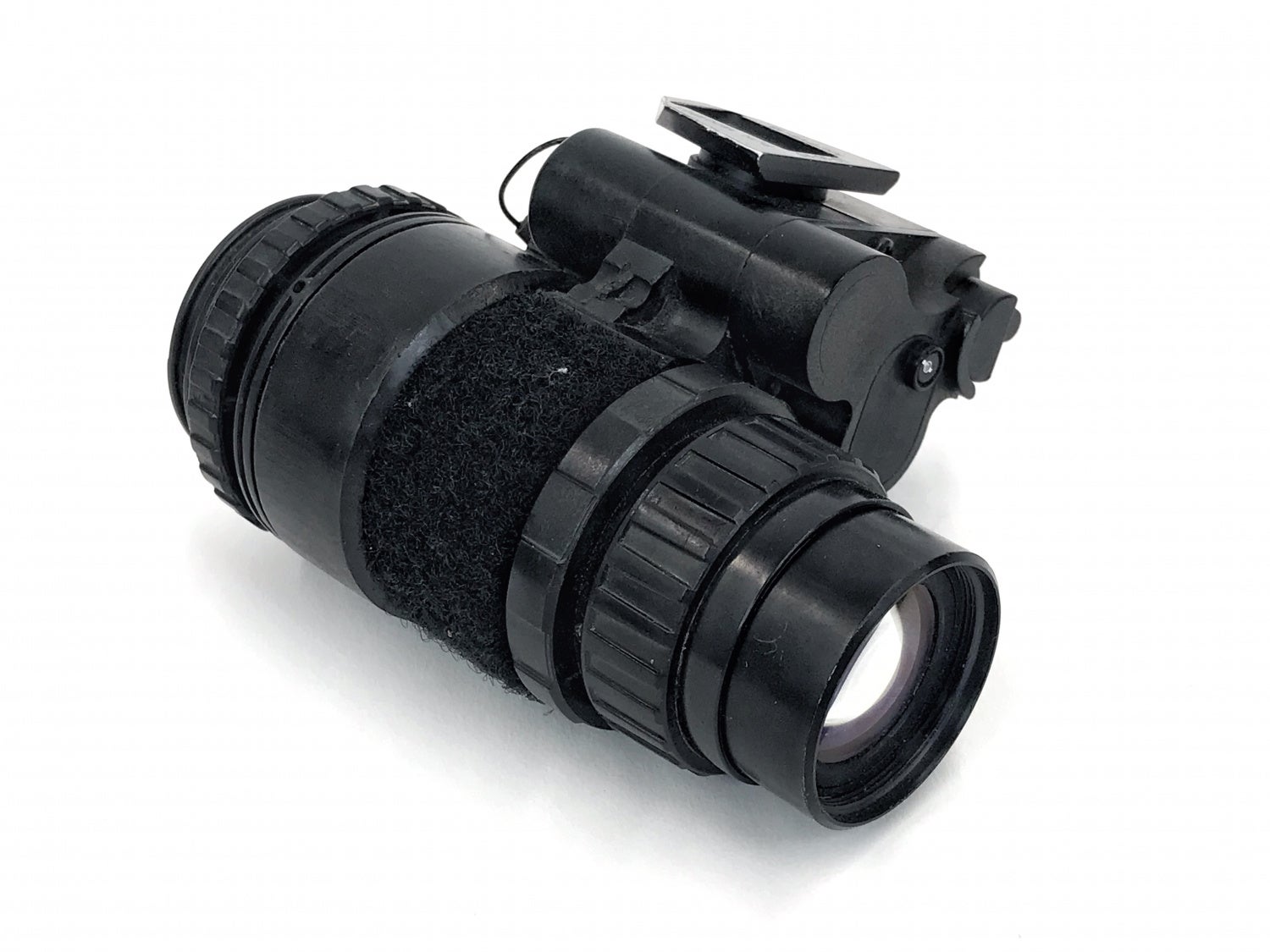
Just like the PVS-15, the PVS-18 is powered by a single AA battery.
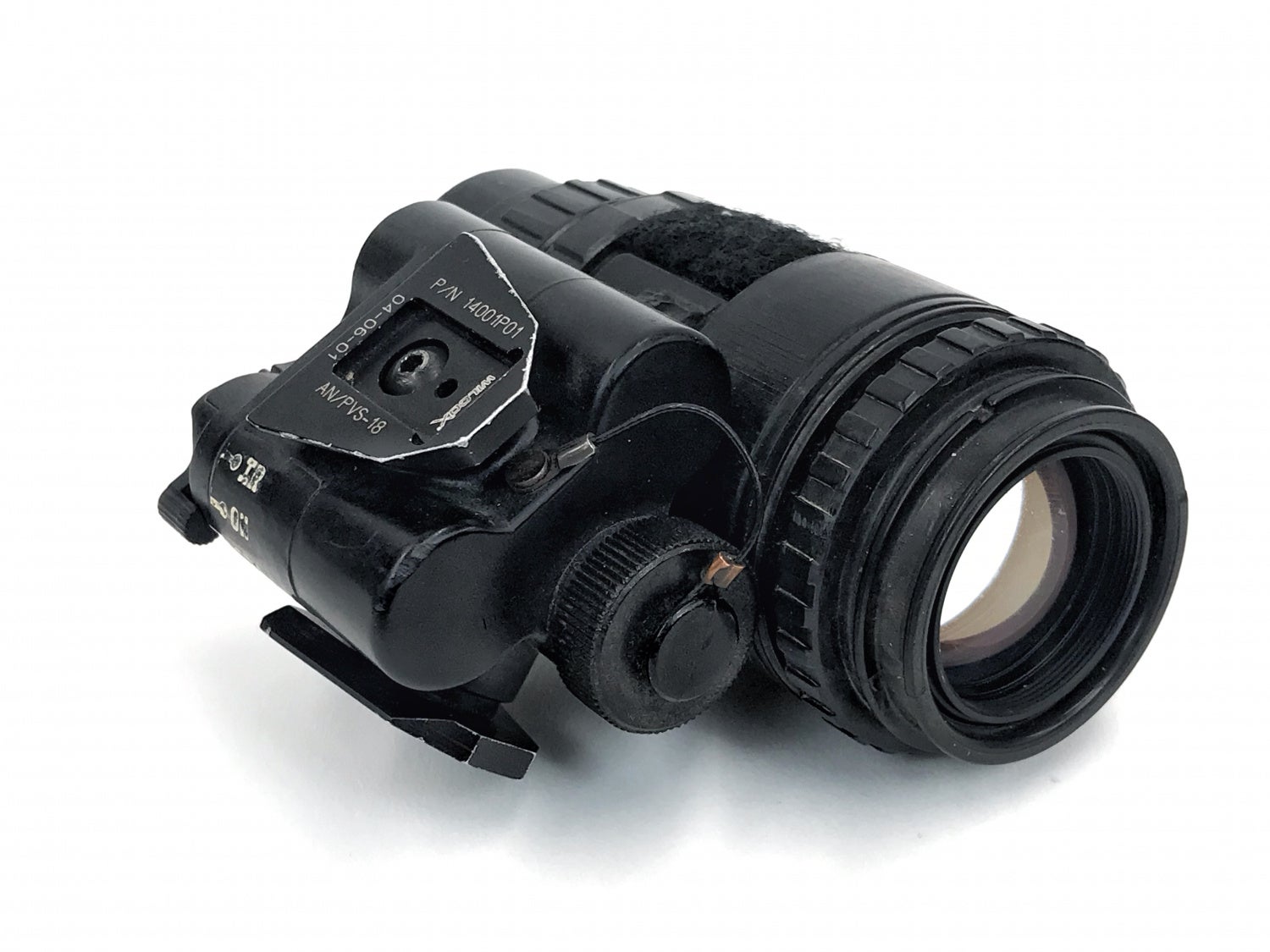
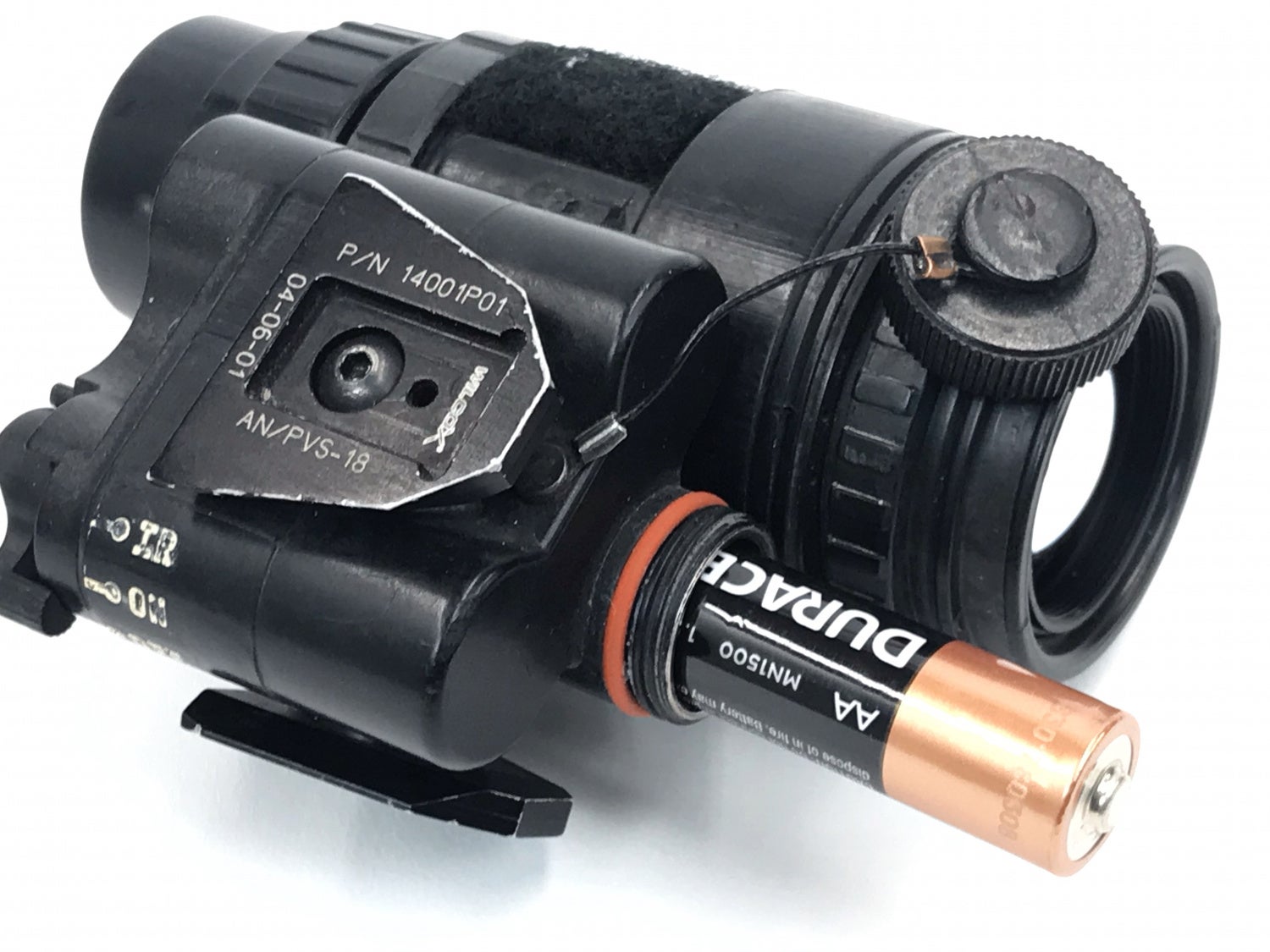
One nice thing about the PVS-18 design is that it is nearly symmetrical with regards to the monocular housing and the dual dovetails.
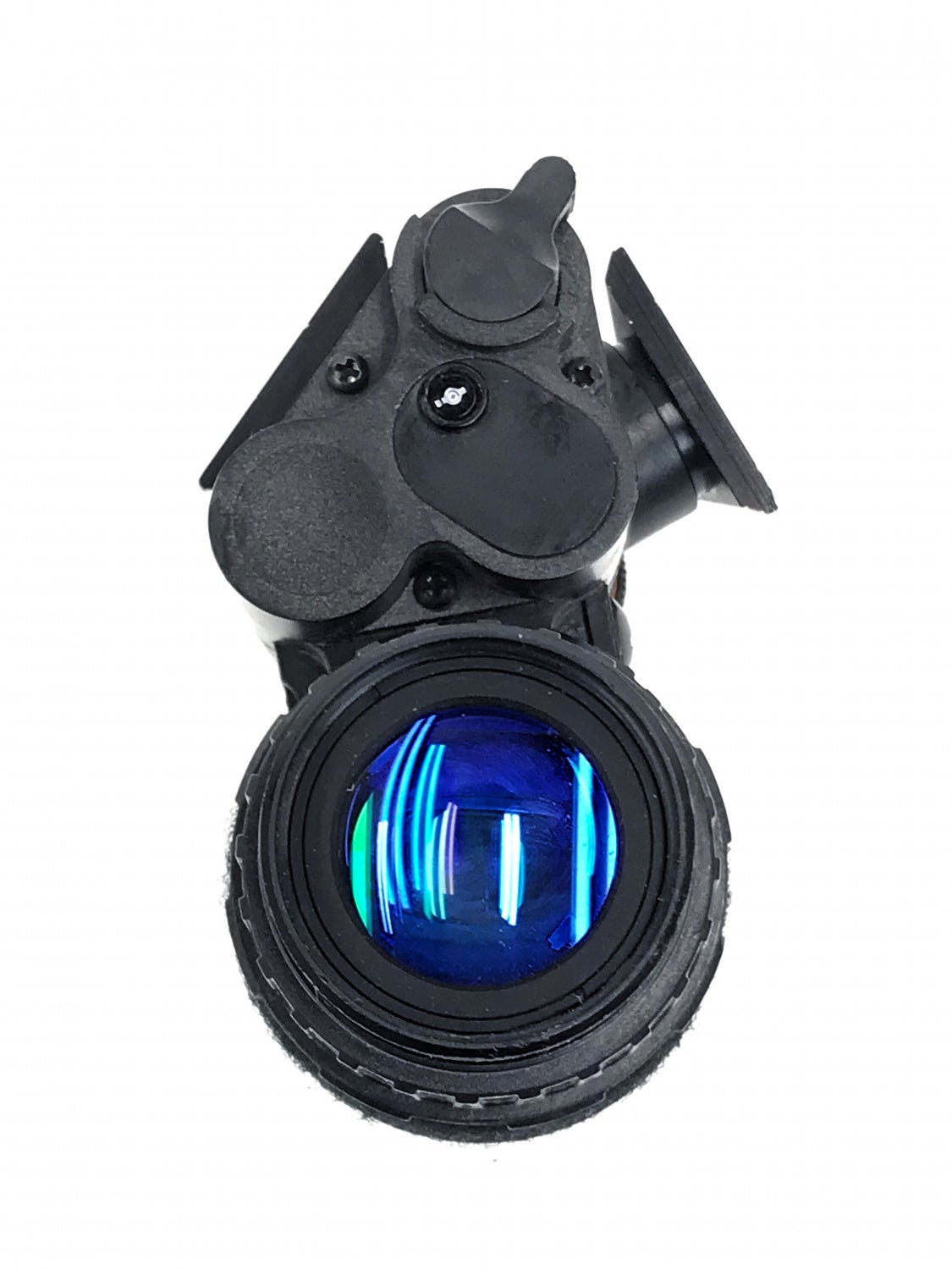
You can see the IR illuminator in the photo below. Oddly the PVS-18 opted out the one cool feature the PVS-15s have, the IR illuminator refocus lens.
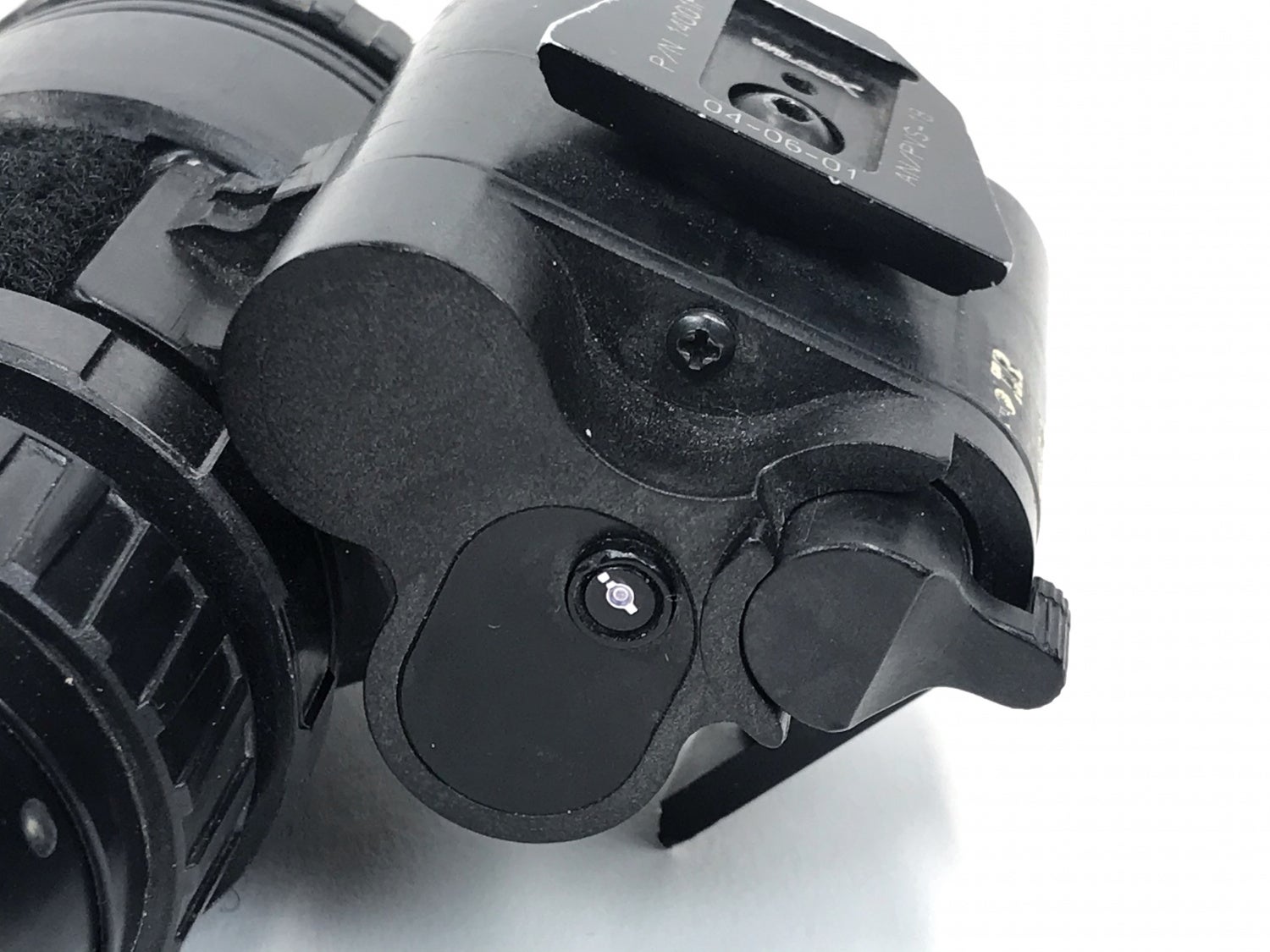
Just like the PVS-15, the 18 power switch has two settings. The settings below the OFF position are for use with a dovetail mount. There is some magnetic switching involved so that when the unit is folded up or detached from the mount, the PVS-18 will shut off. The positions above OFF is for turning the unit on when it is not attached to a helmet.
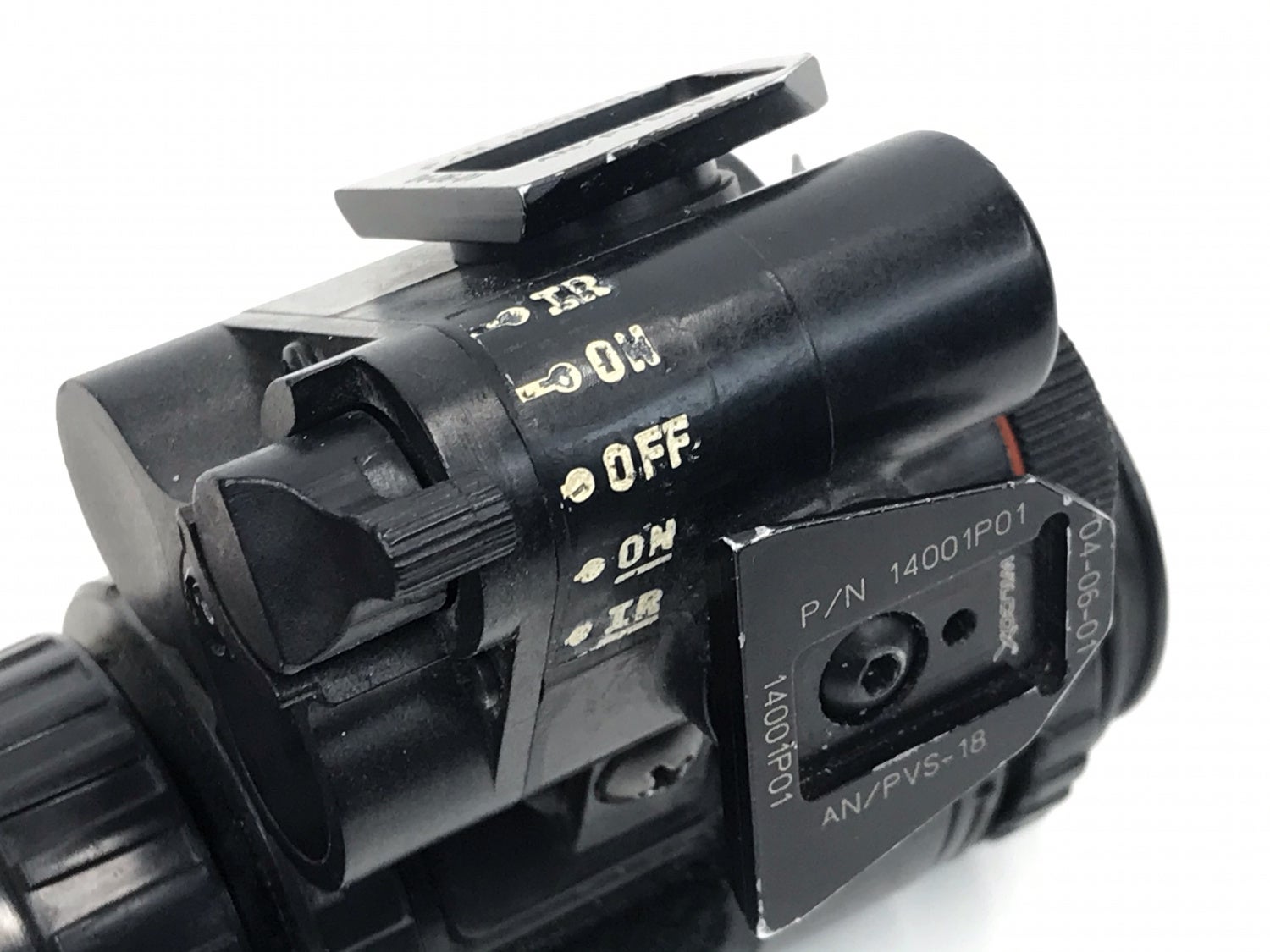
I have not seen that many PVS-18 for sale. This one I bought off a friend. We split the cost, he kept the white phosphor tube that was inside and I kept the housing. It cost almost much as a PVS-14 housing kit, $750. Is that a common price? I don’t know since I don’t see PVS-18s for sale that much.
Litton M942
Here is something that is a little uncommon due to low demand. Litton and other companies made night vision units like these for observation purposes. They could be adapted to cameras for law enforcement reasons. The BE Meyers Dark Invader OWL comes to mind. The Litton M942 is actually a variant of the PVS-18. It uses the same objective lens as the PVS-18 and while the eyepiece looks different, it is compatible with PVS-15/18 rear eyepieces.
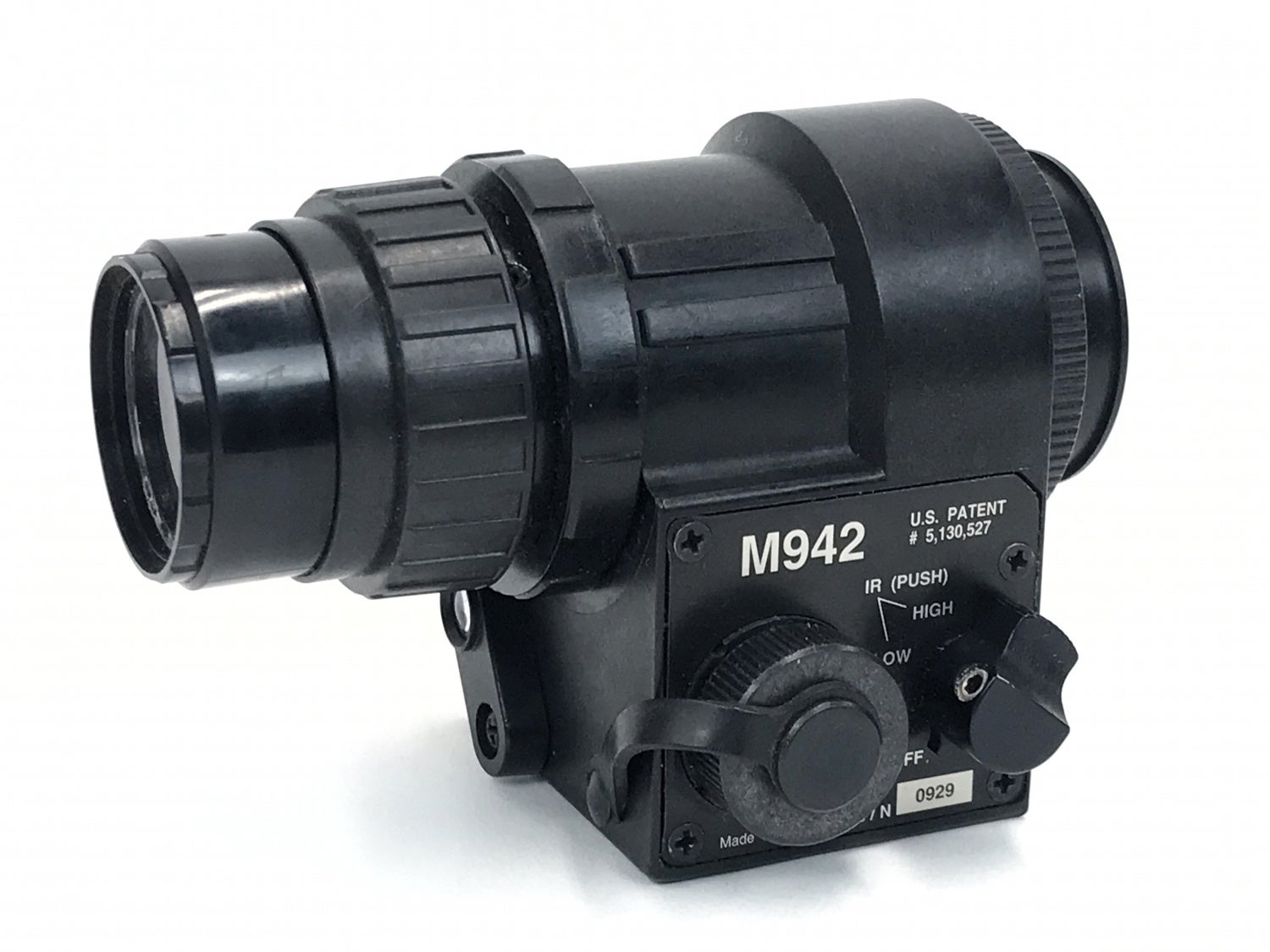
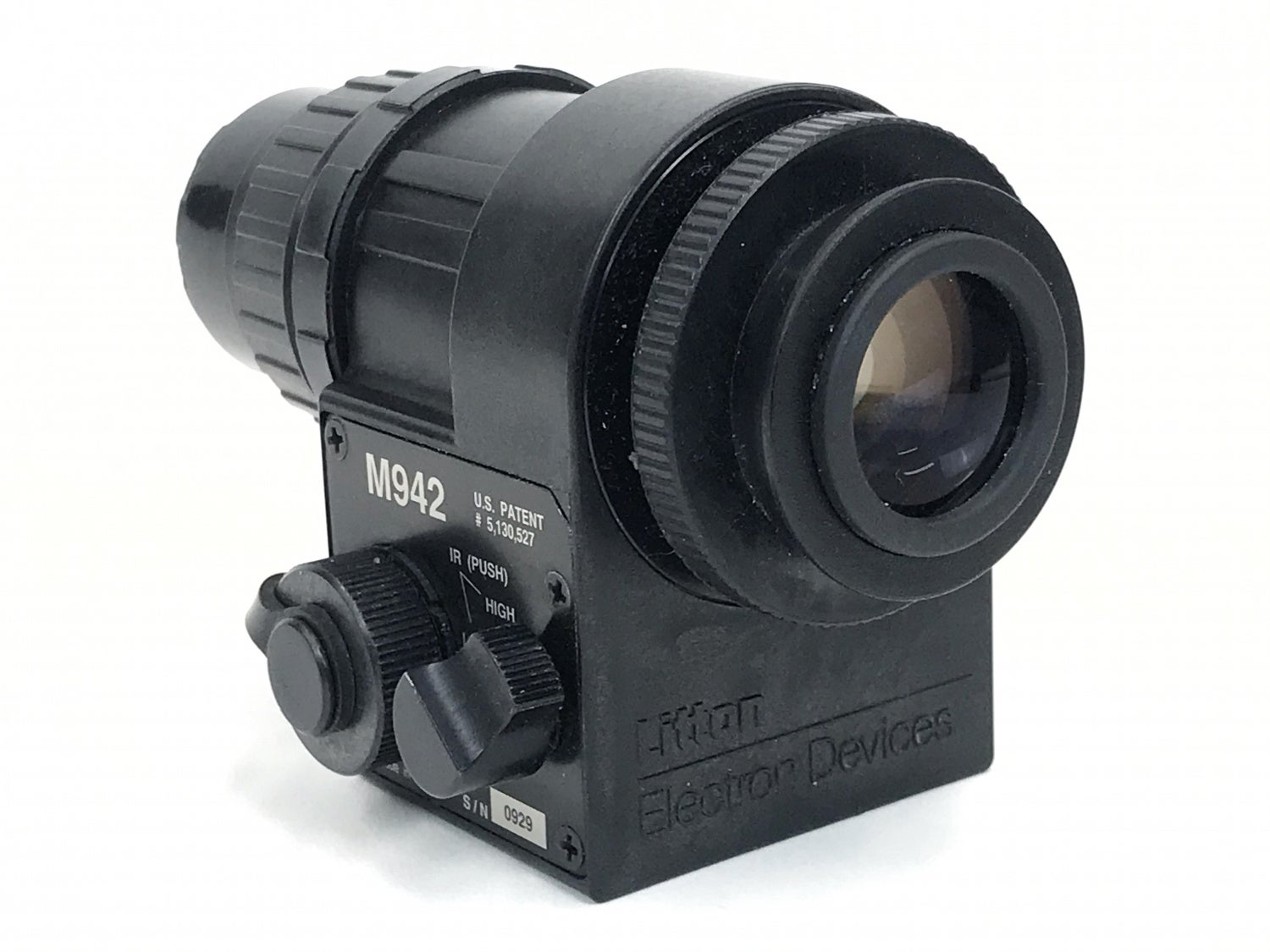
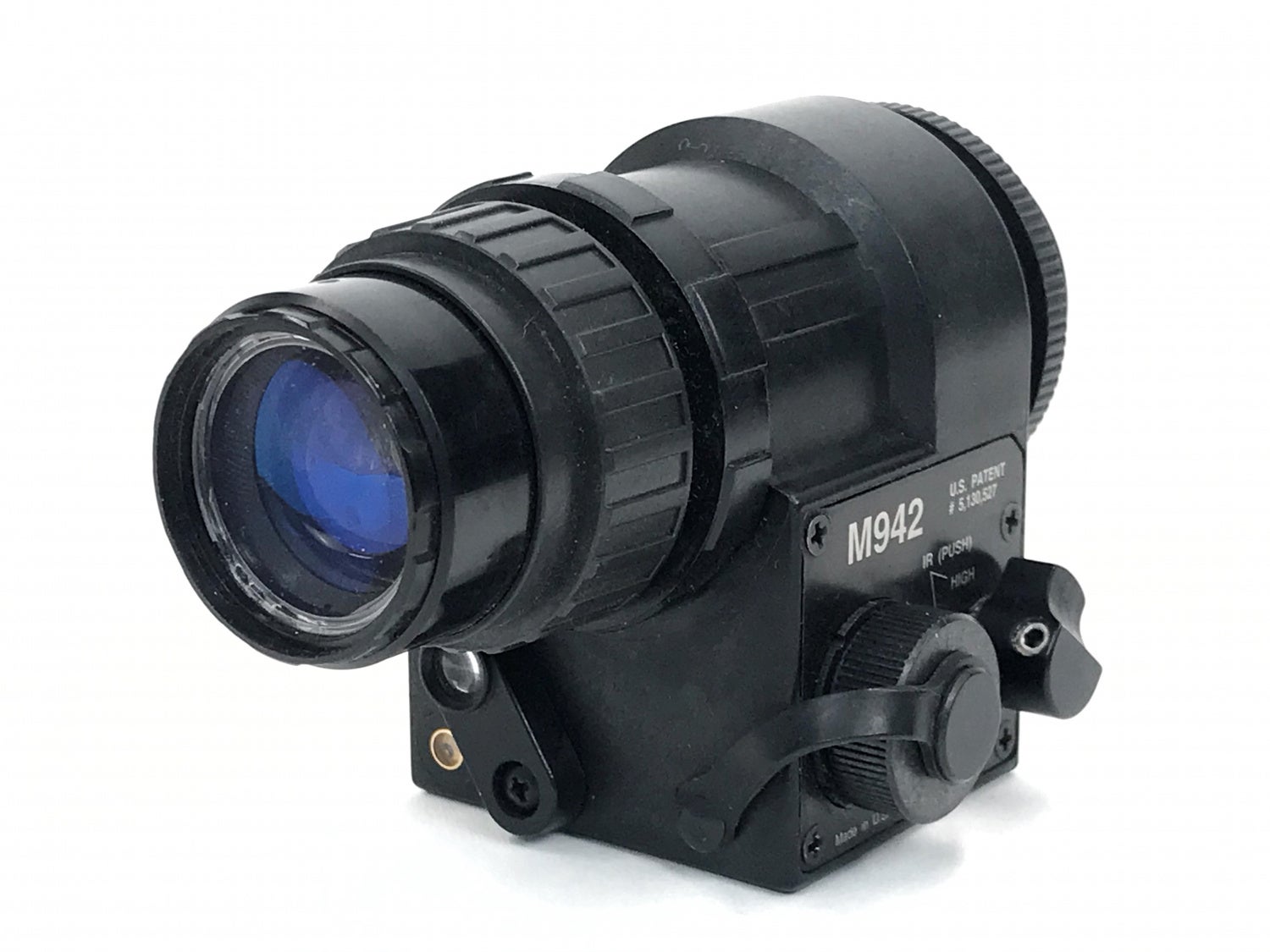
The Litton M942 does have the PVS-15 refocus lens bolted to the front of the housing.
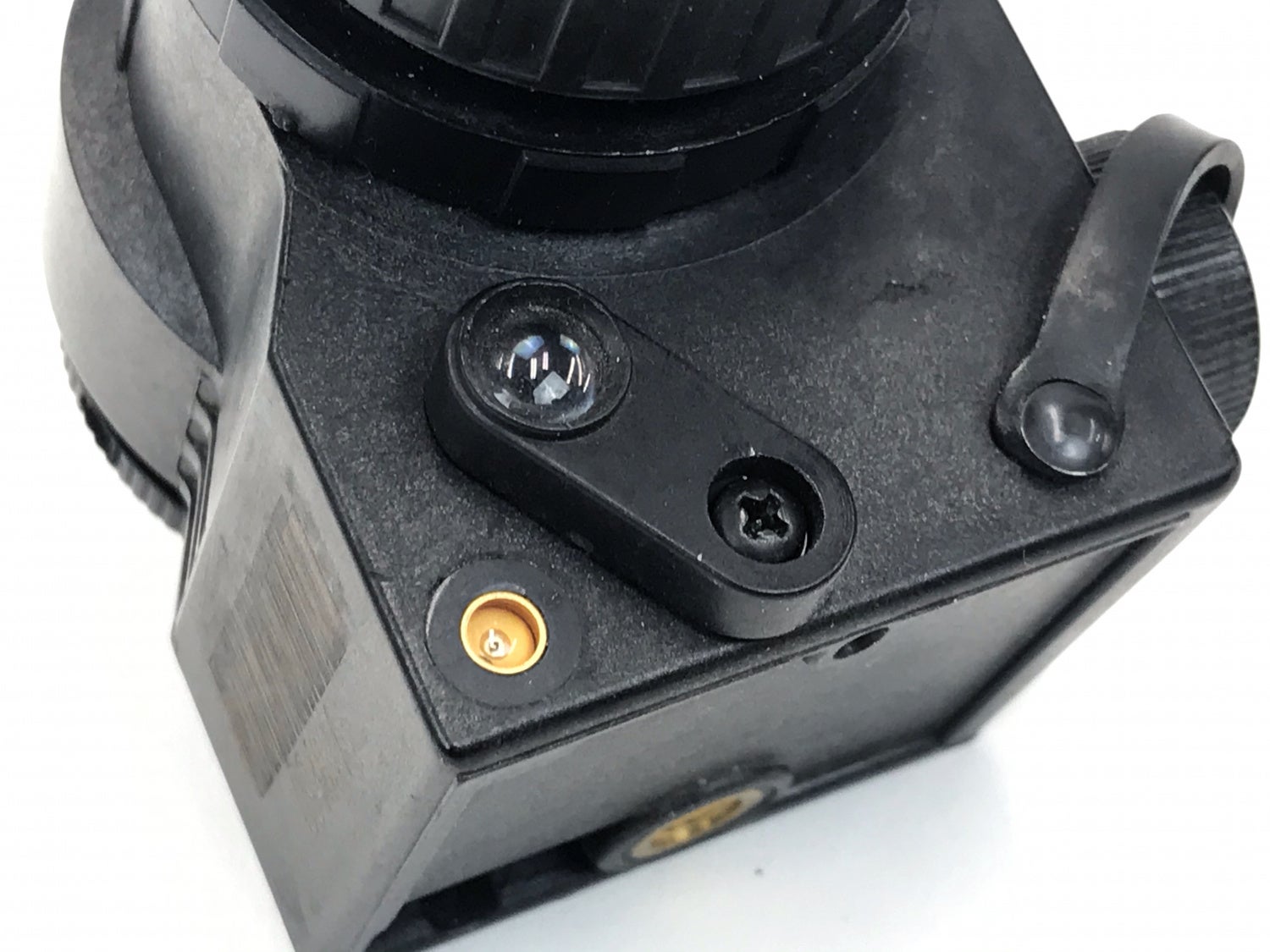
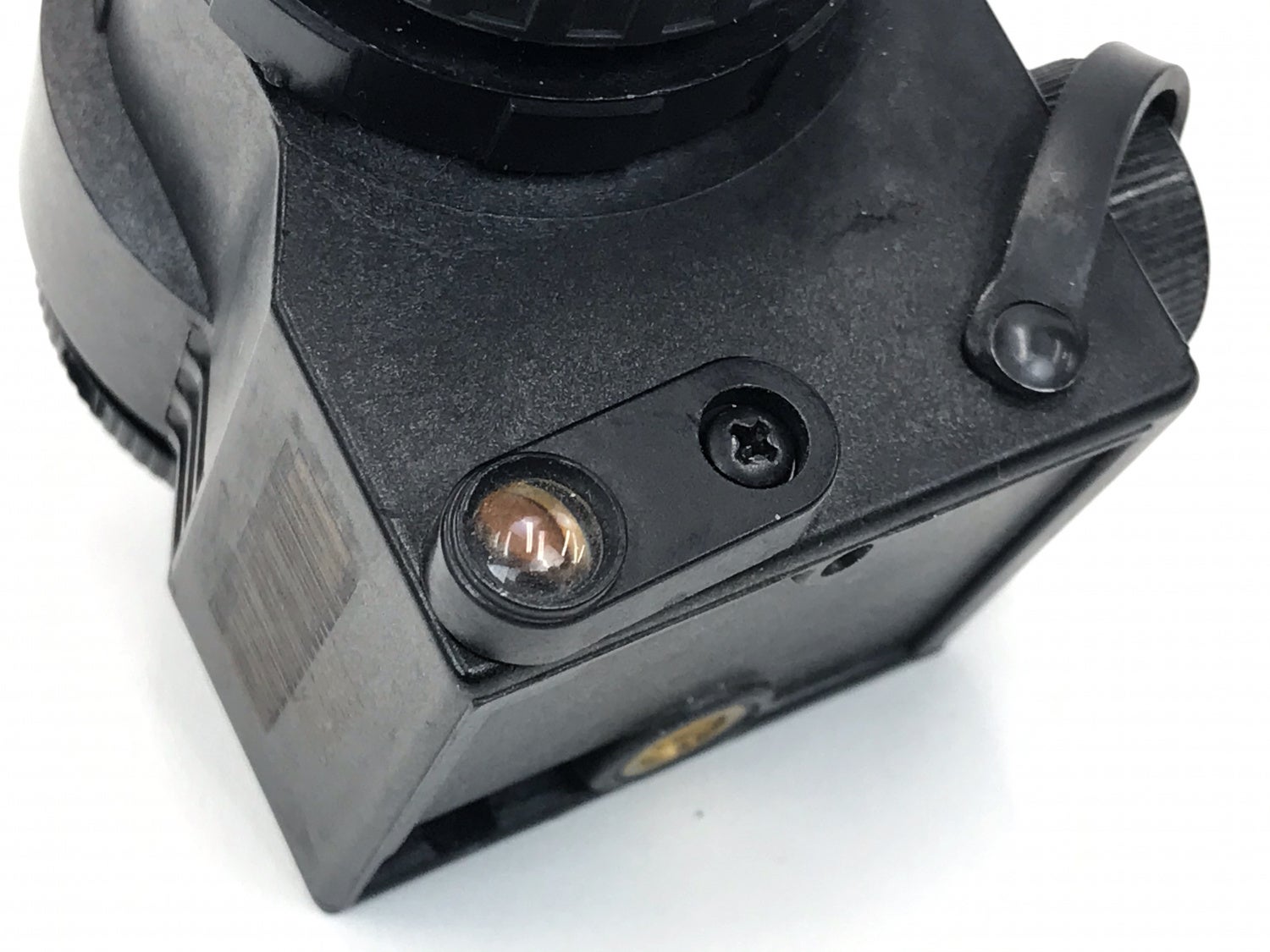
Since the M942 was developed for camera systems, it has a tripod hole on the bottom.
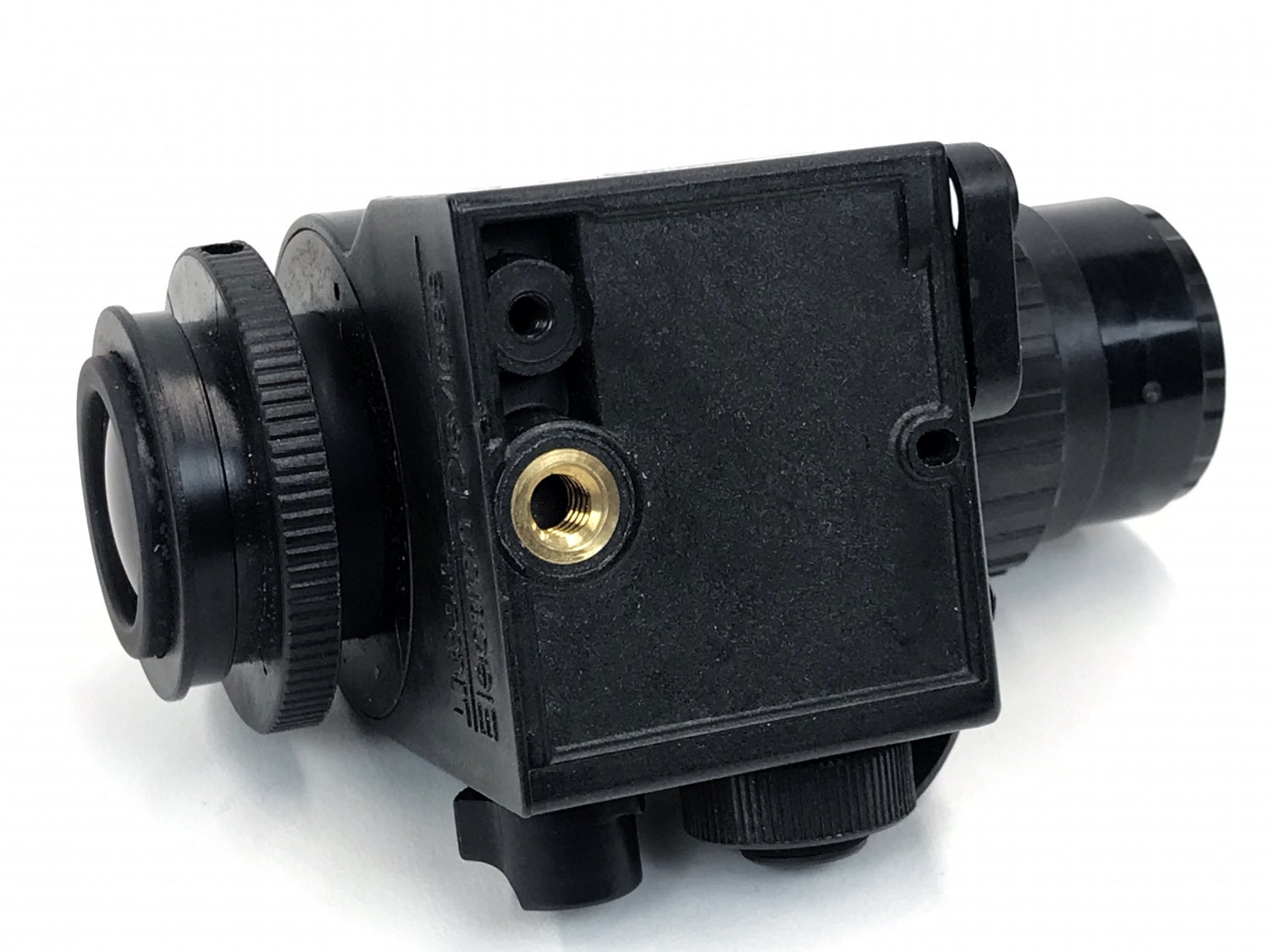
The rear eyepiece is compatible with PVS-15 rear eyepieces. In fact, the Envis is also compatible with these lenses. The M942 rear eyepiece glass is smaller in comparison. 18mm rather than the standard 25mm found on the Envis and PVS-14s.
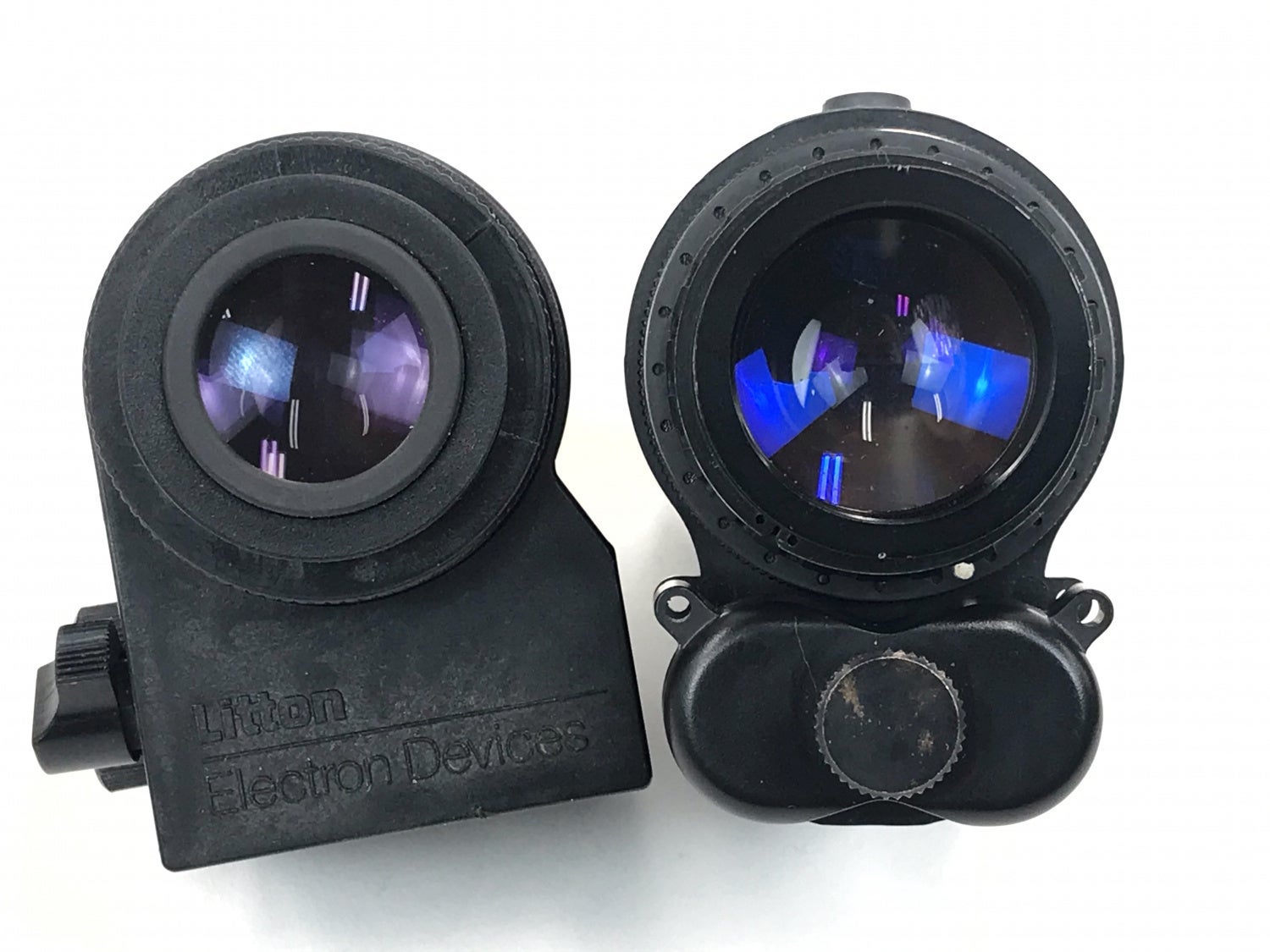
Below you can see the objective lens is identical to the PVS-18. This M942 has a screw-in sacrificial lens.
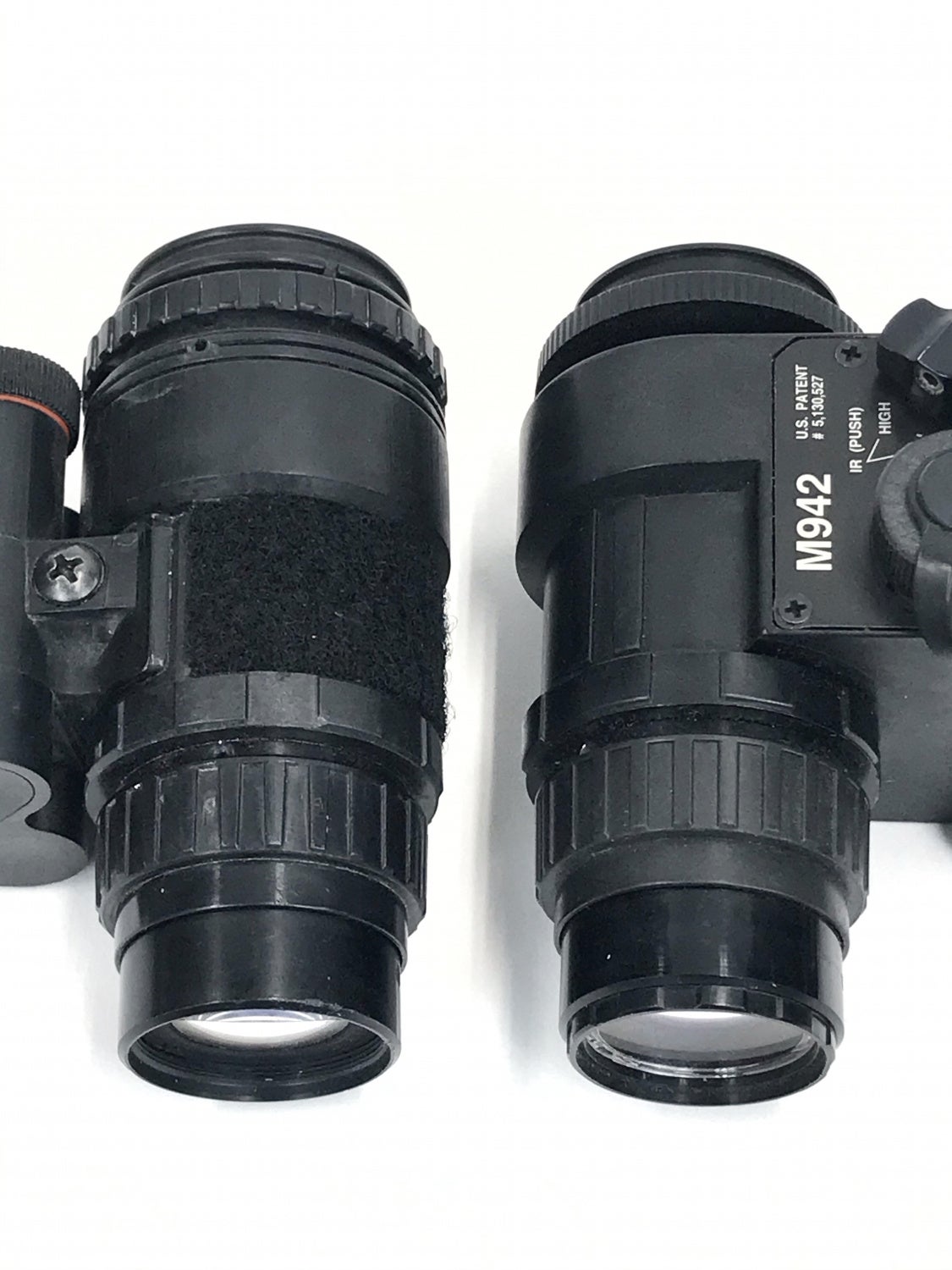 Since the M942 and Envis have compatible eyepieces you can swap them. The M942 rear eyepiece is extremely low profile however you have to twist it for diopter adjustment and then the rear eyepiece will telescope out to a similar length as the Envis rear lens.
Since the M942 and Envis have compatible eyepieces you can swap them. The M942 rear eyepiece is extremely low profile however you have to twist it for diopter adjustment and then the rear eyepiece will telescope out to a similar length as the Envis rear lens.
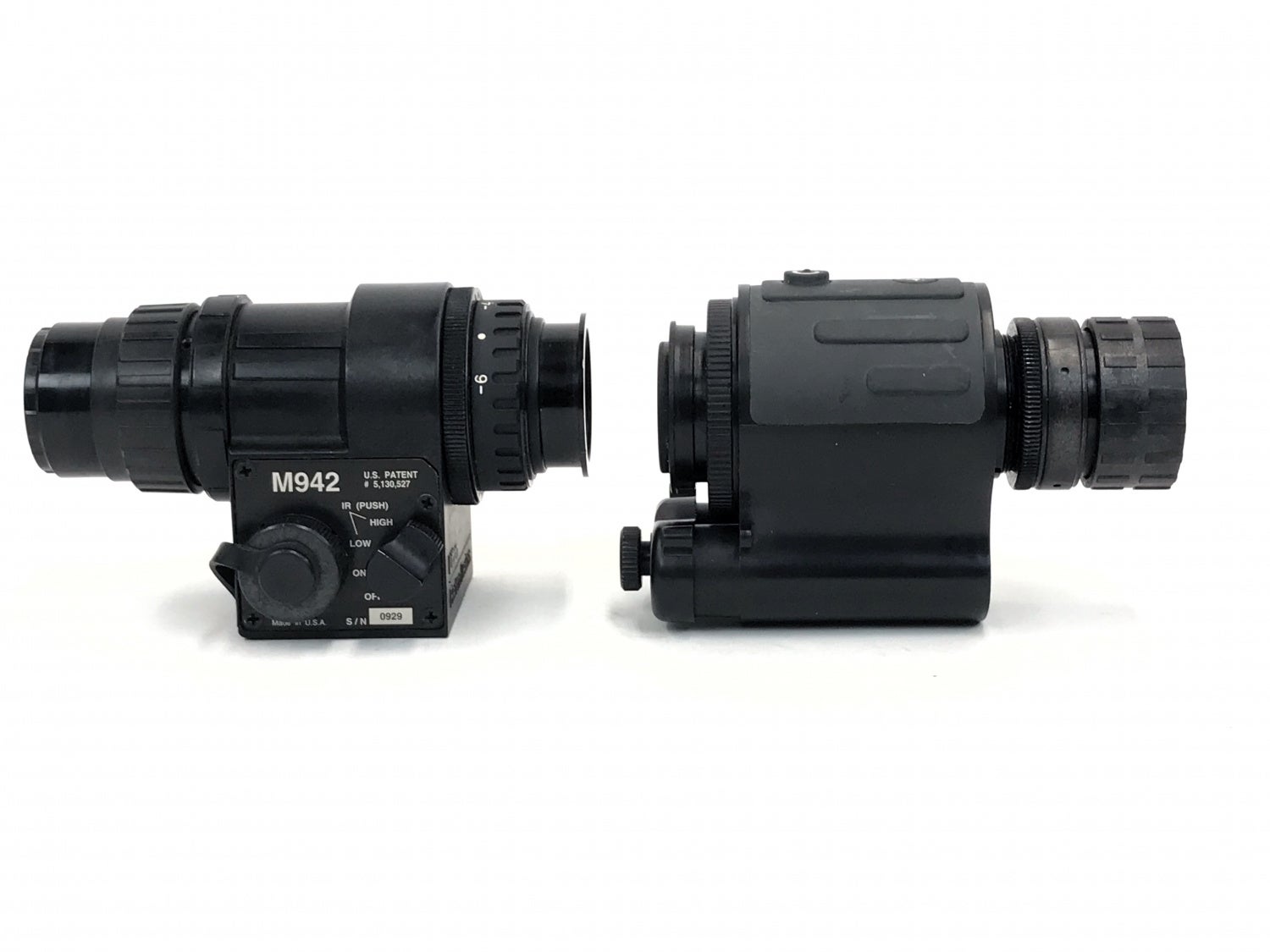
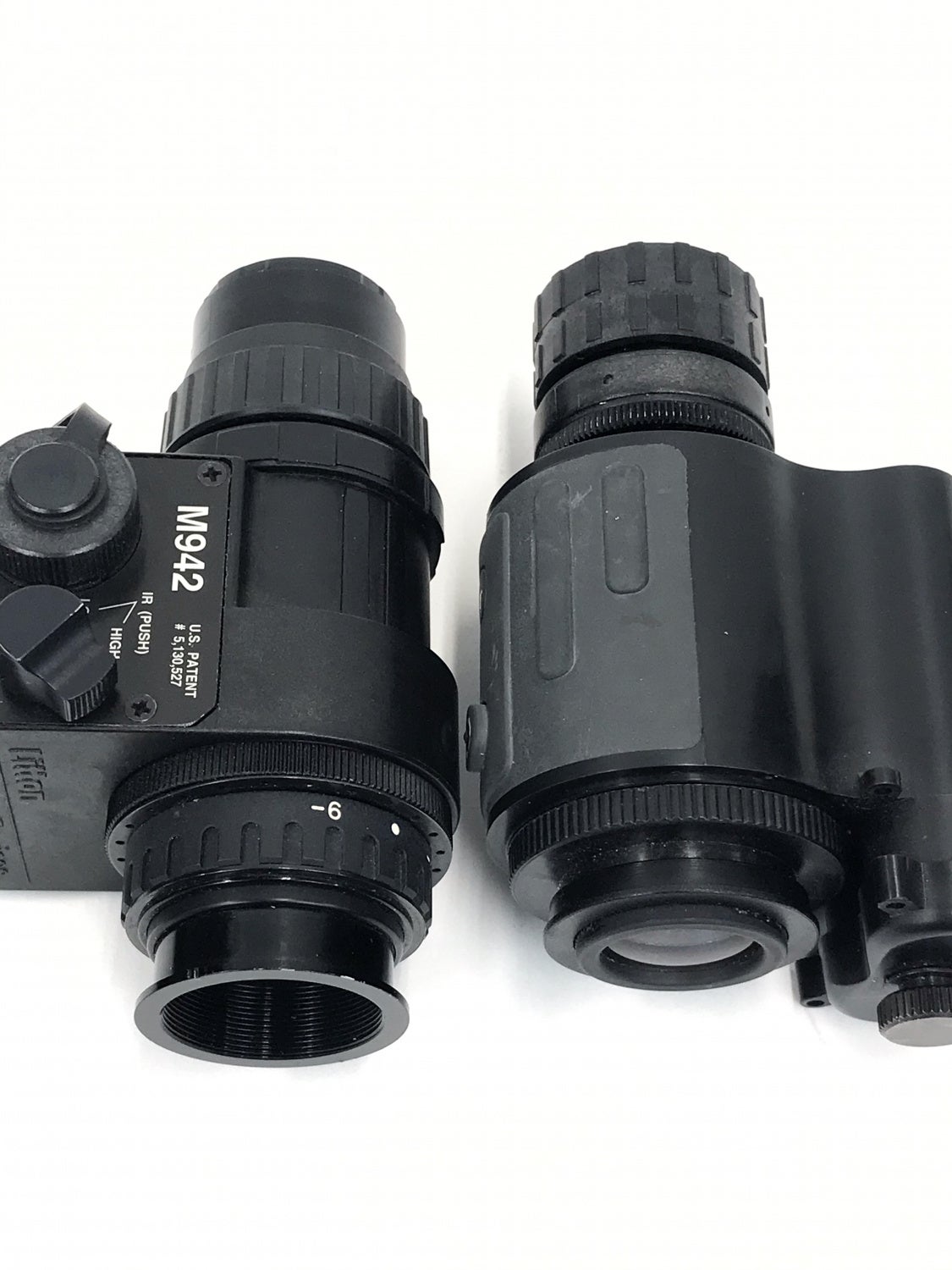
The Litton M942 can be bought for a couple hundred dollars. However, they are more fragile inside due to the wiring. They suffer from the same support issues as the PVS-18 and there is no way to mount one to a helmet without custom fabricating some kind of adapter.
PVS-14 Alternatives, Are They Worth Getting?
Well, it depends on your budget and needs. The MOD-3 and PVS-18 are good replacements for a PVS-14. They can do everything a PVS-14 can and have some unique characteristics that make them better than a PVS-14. The Envis is great if you just want a handheld unit or if you are into astronomy and want to add night vision to your telescope. The Litton M942 is an ugly duckling. It has its own charm but I would not get one in lieu of the other options mentioned. It is a neat unit if you can find one on the cheap and can install a night vision tube into one. There are other PVS-14 alternatives out there that I did not cover since I do not have access to them. Such devices like the MUM-14 and AB Pitbull. There are also some other obscure monoculars out there that I am not familiar with at all. Just know that there are alternatives to the PVS-14 and in some cases are worth looking into.
 Your Privacy Choices
Your Privacy Choices
